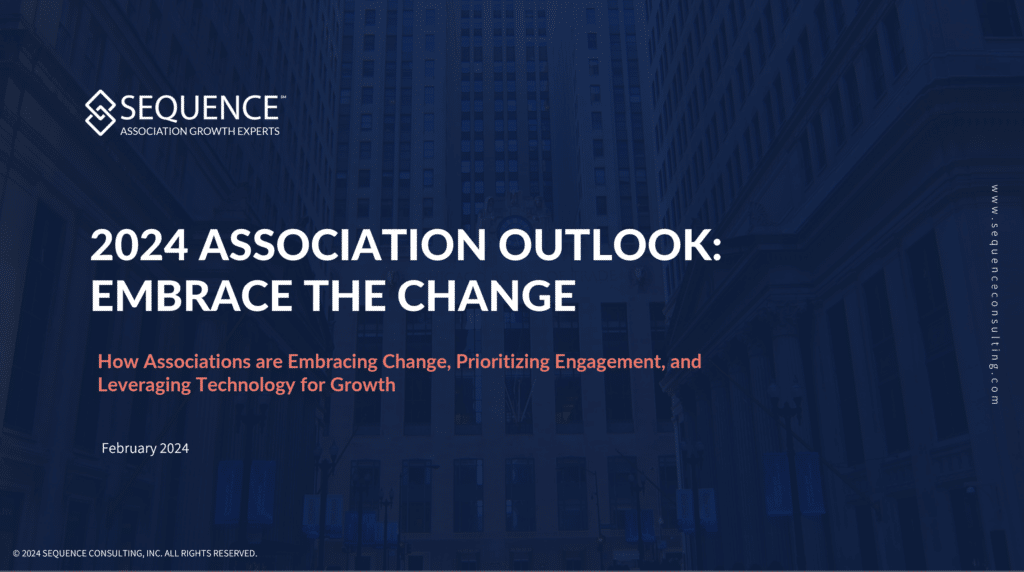Or try one of the following: 詹姆斯.com, adult swim, Afterdawn, Ajaxian, Andy Budd, Ask a Ninja, AtomEnabled.org, BBC News, BBC Arabic, BBC China, BBC Russia, Brent Simmons, Channel Frederator, CNN, Digg, Diggnation, Flickr, Google News, Google Video, Harvard Law, Hebrew Language, InfoWorld, iTunes, Japanese Language, Korean Language, mir.aculo.us, Movie Trailers, Newspond, Nick Bradbury, OK/Cancel, OS News, Phil Ringnalda, Photoshop Videocast, reddit, Romanian Language, Russian Language, Ryan Parman, Traditional Chinese Language, Technorati, Tim Bray, TUAW, TVgasm, UNEASYsilence, Web 2.0 Show, Windows Vista Blog, XKCD, Yahoo! News, You Tube, Zeldman
Sequence Consulting
Association Growth ExpertsThe Seven Habits of Highly Effective Association Leaders 2 Jul 2025, 1:20 pm

There are some commonalities that distinguish the great leaders from the good ones. These seven association leadership best practices can help you lead your association toward growth and sustainability.
Shakespeare said it best regarding association leaders: Some are born great, some achieve greatness, and some have greatness thrust upon them. At my association consulting firm, Sequence Consulting, we have worked with association leaders at all levels for more than twenty-three years—from newbies to veterans, from struggling to stellar.
Truly great leaders are rare. They transform their organizations and drive exponential growth that others only dream of — by consistently following proven association leadership best practices. We’ve worked with many such leaders, and while their styles differ, they all share a commitment to association leadership best practices—specifically, these seven habits that others overlook:
1. Turn outward
It is easy to get bogged down in your organization’s demands and forget to look up. The best leaders make a point of seeking out new ideas and information from outside their own association. They look at organizations in the same space, outside their space, and even for-profits. This always helps leaders shift their beliefs about what’s possible and generates new opportunities.
Highly successful leaders habitually turn outward, scan the outside environment, and bring new ideas and innovations back to their own organization to stay ahead.
Highly successful leaders consistently do seven things others do not.
2. Listen to your rank and file
The members you interact with most are your volunteers. They are your true believers and the most active members. They are unlike most of your members, who join for different reasons, want different things, and feel differently about you. When we work with clients, we talk to both volunteer leaders and less engaged members. Their perspectives are seldom the same.
Highly successful leaders continuously solicit input from their rank-and-file members—and listen to them.
3. To know your members, be a member
We join all our clients’ organizations, but our clients seldom do. As a result, they don’t know their join experience, how much they communicate to their members, or what it’s like to try to find and use their benefits. They are often appalled when they find out. One client emailed their members more than five times daily but did not know it.
Highly successful leaders have their whole team sign up to see the experience through their members’ eyes so they can make improvements.
Turning outward shifts beliefs about what’s possible—and sparks new opportunities.
4. Master the data
Data is the most underutilized asset in most associations. Many associations struggle with data quality. Beyond that, they lack the analytic horsepower to make good use of the data they have. As a result, they don’t understand their trends, who their members are, or how they engage. As often as not, their long-held assumptions about their membership are faulty. One client thought members would never want a digital community. The data said otherwise. It is now one of the benefits that members value most.
Highly successful leaders implement enterprise data platforms and hire data scientists and mathematicians. They use the data to find groundbreaking insights and get breakthrough results.
5. Make membership everyone’s job
No membership is an island. Membership relies on every other part of your organization to succeed. These parts must work together to create great products, content, and experiences to drive member growth. In most organizations, only the membership team has member growth goals, and the rest of the organization, while well-meaning, has no incentive to worry about membership numbers. One client CEO who made membership a goal for everyone tripled their membership growth rate one year and doubled it again the next.
Highly successful leaders make membership everyone’s job. They build it into every incentive plan so that when membership wins, the whole organization wins.
6. Invest in capabilities
Associations that survived the pandemic most successfully were those that invested in the capabilities they needed to adapt and evolve—data analysis, content creation, marketing automation, and UX. No one could have predicted what the crisis would demand of them. Having the tools and skills in place to rise to the occasion was the key to thriving in a difficult time.
Highly successful leaders believe that if they build the right capabilities, the right solutions will follow.
7. Stop before you start
Associations are notorious for starting things they never stop. Programs whose purpose has long passed or been forgotten live on, diverting resources and distracting focus until there is no room left for big ideas that will make a big difference. One client counted more than 75 programs they supported, most underperforming. By focusing on four strategic priorities instead, this CEO was able to concentrate on spaces where they had a right to win and thus transformed the organization.
Highly successful leaders make the hard decisions and say “stop” before they start new programs—to drive strategic focus, innovation, and sustained growth.
Highly successful leaders make the hard decisions and say ‘stop’ before they start something new.
Conclusion
These are more than just healthy habits—they’re association leadership best practices that separate the good from the great and position leaders to drive lasting impact. We believe every association leader can be highly successful. These seven habits will put you well on your way to achieving greatness.
For more on Association Leadership Best Practices please see: Forget Unicorns, Think Platypi: Why Associations Are Better Than Corporations and Building a Culture of Innovation in Associations.
Originally published in ASAE as: Seven Habits of Highly Effective Association Leaders.
Prosperity Is Not a Plan: How Smart Associations Future-Proof Success 2 Jul 2025, 12:51 pm

To continue to thrive, associations need to ensure that they’re not lulled into complacency when things are going well.
In 2024, associations find themselves at a crossroads: Soaring confidence and revenue can either be a launchpad for future growth or a trap that lures leaders into complacency. As membership booms and in-person events return—will your association evolve or miss the opportunity to focus on future-proofing associations for long-term success?
Let the Good Times Roll
According to a recent Advanced Solutions International (ASI) report, confidence among association executives is at an all-time high, with 67 percent expressing optimism about future growth and sustainability, up from 24 percent in 2023.Forecasts are promising, with 60 percent of associations confident in reaching revenue goals and 61 percent anticipating increased membership. A Marketing General Incorporated report shows that in-person events are back, with 61 percent planning to focus solely on them this year.
The troubles of the pandemic days seem far behind, and the outlook for 2025 looks even brighter. The best of times can also be perilous if association leaders take success for granted
The best of times can also be perilous if association leaders take success for granted.
More Competition, Higher Expectations
A booming economy leads to greater competition for members’ time and attention. Associations must compete not only with other membership organizations but also with for-profit businesses with the resources to innovate and quickly provide on-demand value. Members now expect dynamic experiences, rapid professional development, and exclusive resources that adapt to their needs.
Associations relying on traditional approaches risk irrelevance. Members have more choices and expect associations to meet heightened expectations. If associations fail to adapt, members will seek value elsewhere. To rise above the noise, consider differentiating through personalized member journeys or AI-driven automation.
Choose Your Investments Wisely
Economic prosperity provides associations the means to invest in their future, but this opportunity can be squandered if investments are not made wisely. The strongest organizations that came through the pandemic were those that invested in core capabilities like content creation, digital platforms, and member service.
Associations should use their financial resources to bolster these core capabilities rather than pursue short-term wins or flashy initiatives. Investments should focus on enhancing member engagement, improving the member experience, and differentiating the association in a competitive market. Prosperity is the ideal time to strengthen the foundation for long-term resilience.
For example, investing in AI-driven data analytics to predict member needs and provide tailored solutions can boost engagement and provide data insights to refine your offerings.
Now is the ideal moment for future-proofing associations by investing in foundational capabilities that can weather economic shifts and rising member expectations.
Associations relying on traditional approaches risk irrelevance.
The Curse of Complacency
With success comes the risk of complacency. The mistake lies in assuming that what worked during boom times will continue to work indefinitely. Associations can become too comfortable, relying on past success without adapting. Highly successful leaders know that to stay ahead, they must continuously adapt, innovate, and evolve their approach.
Complacency is more than a missed opportunity—it can erode your association’s relevance. Without regular innovation, associations risk becoming obsolete as new member needs arise and competing organizations adapt faster.
Associations that fail to lock in their gains and remain alert to signs of trouble may find themselves in a difficult position when the good times end. Those that fail to prepare for the next downturn risk losing momentum and may struggle to catch up when conditions change
What goes up must come down. Build resilience now, while you have the momentum.
Strategies for Thriving in Good Times
How can associations avoid these pitfalls and turn economic prosperity into sustainable growth? Here are a few strategies from some of the most successful associations:
- Make yourself stand out. Increased competition means members need reminders of why your association stands out. Proactively communicate your unique value and adapt to rising expectations. Emphasize how your offerings address evolving needs and showcase the tangible benefits members receive.
- Invest in your capabilities. Use prosperity to make long-term investments that solidify gains. Successful associations are already experimenting with AI-driven personalization, advanced data analytics, and custom learning paths. By embracing these forward-thinking investments, associations can future-proof their organizations and exceed member expectations.
- Beware complacency! Guard against complacency by continuously evolving programs and services. Highly successful leaders prioritize innovation and member insight, actively testing new initiatives and refining approaches to stay in tune with changing needs. Set aside resources for experimentation to ensure your association stays competitive and ahead of trends.
- What goes up must come down. Prosperity is the perfect time to future-proof your association. Build resilience by diversifying revenue streams, reinforcing reserve funds, and crafting agile contingency plans. By showing preparedness and stability, you strengthen trust and ensure members see your association as a reliable long-term resource, regardless of market conditions.
Conclusion
In times of prosperity, it’s easy to coast. But the associations that thrive long-term are those that make proactive choices—investing in resilience and innovating to stay ahead of the curve. Use today’s success to focus on future-proofing your association, so you can thrive in good times and bad.
For more on Future-Proofing Associations, please see: Future-Proof Your Assocation: 10 Essential Steps forSuccess and Future-Proof Your Association by Adopting an Agile Mindset.
Originally published in ASAE as Avoiding the Pitfalls of Prosperity.
Smart Moves: How AI Is Shaping the Future of Associations 2 Jul 2025, 12:24 pm

Discover how forward-thinking organizations are leveraging artificial intelligence to make data-driven decisions and maximize member value.
Artificial intelligence (AI) is transforming the way associations operate. From predicting member retention trends to automating personalized engagement, AI for associations is allowing organizations to work smarter, analyze data more effectively, and deliver tailored experiences at scale. While many associations recognize AI’s potential, knowing where to apply it for the greatest impact is the challenge.
The most successful associations use AI strategically — not as a replacement for human interaction but as a tool that enhances efficiency, supports data-driven decision-making, and ensures that members receive more relevant, timely, and valuable experiences.
Here are some exciting ways AI is shaping the future of associations.
Reading the Signs: How AI Helps Associations Retain More Members
More and more organizations are exploring AI for associations to improve member retention through predictive analytics and early-warning signals.
Member retention is one of the most significant challenges for associations. Traditional retention strategies often involve reactive approaches, such as renewal reminders and post-lapse outreach efforts. AI is enabling a shift toward proactive retention strategies by identifying at-risk members before they leave.
AI-driven predictive analytics analyze member behaviors, engagement history, and participation trends to flag individuals who may be likely to lapse. These insights allow associations to take targeted actions that improve retention.
A large medical society client has implemented AI-powered predictive analytics to assess members’ propensity to renew. The system identifies patterns of disengagement, such as reduced online community activity and declining event attendance, which correlate with defections. By flagging these members, the association can implement targeted interventions, such as personalized outreach and renewal incentives, that significantly improve renewal rates.
AI is allowing organizations to work smarter, analyze data more effectively, and deliver tailored experiences at scale.
From Guesswork to Strategy: How AI Transforms Decision-Making
Associations increasingly rely on data-driven decision-making to refine membership structures, pricing models, and program offerings. AI allows organizations to go beyond surface-level metrics, uncovering hidden trends and insights that improve strategic planning.
This is where AI for associations shines: helping leaders uncover insights that traditional data analysis often misses.
One of the most innovative applications of AI in this area is the use of digital twins, a technology that enables associations to simulate membership models, pricing strategies, and engagement tactics before they implement them.
Another client, a prominent scientific society, used AI simulations to test multiple new membership structures. Rather than making assumptions about pricing and benefits, they ran scenarios through an AI model to predict their impact on member engagement, renewals, and revenue growth. The analysis revealed that members valued customized benefits more than lower pricing. Based on this insight, they introduced a membership model with flexible benefit options, which led to a 20 percent increase in renewals without reducing dues revenue.
Beyond Mass Messaging: How AI Delivers Personalized Engagement at Scale
A global healthcare association we worked with faced a growing challenge: members expected tailored content and communications. However, with thousands of professionals across different specialties and career stages, delivering personalized engagement at scale was overwhelming. Traditional segmentation efforts required extensive manual effort, and broad messaging often missed the mark, leading to declining engagement.
By integrating AI-powered automation, built into their AMS platform, the association could analyze member behavior in real time. The system tracked interactions across emails, event attendance, and website activity, identifying patterns in content preferences. Members who frequently read regulatory updates receive policy change alerts, while those engaged with leadership development content are invited to executive roundtables. New members are guided through a structured onboarding sequence that introduces them to relevant resources based on their interests.
The impact has been immediate. Email engagement tripled, event attendance rose, and members reported finding more value in their experience. Without adding staff hours, the organization delivers the level of personalization that members expect, strengthening their connection to the association.
The most successful associations use AI strategically—not as a replacement for human interaction, but as a tool to enhance it.
AI-Powered Marketing: Smarter Recruitment, Stronger Growth
A national trade association we work with struggled to expand its membership base despite heavy investments in digital ads and email campaigns. Their broad, one-size-fits-all outreach failed to engage the right prospects, leading to stagnant growth and rising recruitment costs.
AI changed that by analyzing past recruitment data to identify which professionals were most likely to join and what messaging resonated best. The analytics found that while some prospects responded to career advancement opportunities, others were drawn to advocacy efforts or networking. With these insights, the association refined its marketing strategy. Email campaigns became more targeted, digital ads were optimized in real time, and outreach shifted to high-performing channels like LinkedIn.
Within six months, new member acquisition increased by 15 percent, and email engagement jumped by 40 percent. AI didn’t just automate marketing — it made it smarter, ensuring every effort was guided by data rather than guesswork. The association transformed its recruitment strategy into a scalable, data-driven success by continuously refining outreach based on actual engagement patterns.
The practical applications of AI for associations are growing fast—and the results are already measurable.
AI didn’t just automate marketing — it made it smarter.
The Future of AI for Associations
AI is no longer an emerging technology — it’s a practical tool that associations already use to drive measurable results. Whether through predictive retention modeling, strategic decision-making, automated engagement, marketing optimization, or content curation, AI enhances how associations operate while improving member value.
Rather than replacing human-driven efforts, AI is augmenting association professionals’ ability to make smarter decisions, create meaningful engagement, and deliver personalized experiences at scale.
Associations that embrace AI now will keep pace with industry changes and position themselves as leaders in delivering innovative, data-driven member experiences. The question isn’t whether AI for associations will shape the future of associations — it’s how associations choose to use it.
For more on AI for Associations, please see: A Brief Beginners Guide to Using AI for Associations and Is Your Association Ready for AI? A Strategic Roadmap for Sustainable Innovation.
Originally published in ASAE as Smart Moves: How AI Is Shaping the Future of Associations.
How Smart Associations Stay Relevant: Lessons in Agility from an Unlikely Source 2 Jul 2025, 12:01 pm

Association leaders can learn a lot from a humble insect.
The association world is thriving. Membership is growing, events are roaring back to life, and the economy is strong. But there’s more to this success story than meets the eye. The most successful associations have something in common—they’ve embraced agility to their associations stay relevant in a fast-changing world.
Agility is not a word you’d typically use with associations. Historically, associations have been known for their measured pace, methodical planning, and carefully siloed operations. Yet the pandemic forced associations to break down barriers, move faster, and take risks they never would have considered. One client shifted from a monthly content schedule to a daily one—overnight. Another went from revising their strategic plan every five years to revisiting it every quarter. What prompted these dramatic shifts? Urgency. Associations that adapted quickly didn’t just survive the pandemic, they thrived.
Associations must keep that agility alive, and the humble fruit fly offers inspiration
Why Fruit Flies?
Despite its short 30-day lifespan, the fruit fly achieves remarkable results. This tiny insect is a master of urgency, adaptability, and focus—three traits associations need to thrive in today’s environment.
Here’s how fruit flies succeed:
- Intense productivity: A fruit fly may only live for a month, but it accomplishes a staggering amount in that time. A single female can lay up to 2,000 eggs, ensuring her impact lasts far beyond her short lifespan.
- Environmental sensitivity: Fruit flies are highly attuned to their surroundings. They can detect the smell of fruit from up to six miles away and adapt their behavior instantly to reach it.
- Magnetic orientation: While focused on the immediate goal in front of them, fruit flies remain aware of the magnetic fields around them to stay stable and oriented in flight. These traits offer a surprising but powerful metaphor for how associations stay relevant and operate effectively in today’s environment.
The most successful associations have something in common—they’ve embraced agility.
How Associations Can Incorporate Fruit Fly Attributes
1. Embrace urgency.
Fruit flies make every moment count. Associations should adopt a similar mindset, treating opportunities and challenges with a sense of urgency. Instead of overanalyzing, take action. Quick decision making doesn’t mean abandoning thoughtfulness; it means prioritizing execution.
2. Stay attuned to your environment.
Fruit flies’ ability to detect fruit miles away mirrors the need for associations to remain hyperaware of their environment. Monitor market trends, member feedback, and emerging technologies to ensure you’re always a step ahead. One association, for instance, leveraged real-time member surveys to pivot from in-person events to virtual ones within weeks of the pandemic’s onset. That responsiveness built trust and loyalty.
3. Balance focus with adaptability.
While fruit flies keep their eyes on immediate goals, they also stay aware of broader environmental factors, like magnetic fields. Associations can do the same by pursuing short-term objectives without losing sight of long-term strategy.
This might involve quarterly strategic planning sessions that allow leaders to reassess priorities based on current realities. It’s about staying flexible while keeping your compass pointed toward your mission.
From Stuck to Sprinting in Association Culture
How can associations embed agility into their DNA? It starts with rethinking traditional processes and fostering a culture that values flexibility and innovation.
- Break down silos.
Cross-functional collaboration is critical to agility. Break down departmental silos to enable faster communication and decision making. Teams can respond to challenges and opportunities more effectively when they work together. - Encourage experimentation.
Fruit flies adapt through trial and error, and associations should do the same. Create an environment where risk-taking is encouraged and failure is seen as a learning opportunity. Pilot new programs with the understanding that not every experiment will succeed, but each one will teach you something valuable. - Make strategic plans dynamic.
A static strategic plan can hold back progress. To help associations stay relevant, strategy must be dynamic and responsive. Treat it as a living document that evolves with your association’s needs. Quarterly reviews or even real-time updates can help ensure your strategy remains relevant and impactful.
Quick decision making doesn’t mean abandoning thoughtfulness; it means prioritizing execution.
The Payoff of Staying Agile
Associations prioritizing agility will be better equipped to navigate today’s fast-paced world. The benefits are clear:
- Resilience: Agile organizations can adapt quickly to disruptions, whether economic, social, or technological.
- Member satisfaction: By responding swiftly to member needs, associations can enhance loyalty and engagement.
- Sustainable growth: Agility fuels innovation, helping associations stay relevant and competitive in a changing landscape.
Channel Your Inner Fruit Fly
Agility isn’t just a buzzword; it’s the secret to long-term success for associations. Associations that embrace urgency, sensitivity, and adaptability will stay relevant and thrive in the years ahead.
The next time you see a fruit fly buzzing around, take a moment to appreciate its focus, resilience, and resourcefulness. It might just inspire your next big breakthrough.
Agility isn’t just a buzzword; it’s the secret to long-term success for associations.
For more on Associations Impact, please see: Forget Unicorns, Think Platypi: Why Associations Are Better Than Corporations and The Seven Habits of Highly Effective Association Leaders.
Originally published in ASAE as: Embracing Agility: Lessons from the Fruit Fly.
4 Key Metrics Associations Should Track to Measure ROI 21 May 2025, 12:33 pm
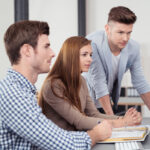
Author: Kristen Wall
Between funding member benefits, new programs, and various marketing initiatives, it takes a significant investment to further your association’s offerings. You can only hope this investment will yield higher member engagement—but how can you know for sure?
Your association’s return on investment (ROI) demonstrates the value derived from each of its expenses. This calculation enables you to make informed financial decisions, set appropriate prices for membership tiers, and justify each of its investments. Ultimately, your association’s ROI can shape its future strategies.
Let’s review the metrics your association should track to measure its ROI.
1. Member Engagement
Engagement levels indicate members’ satisfaction with your offerings. This information allows your association to assess which offerings are worth investing in and where your resources will be best spent.
However, as Tradewing’s member engagement guide explains, this includes all the ways members interact with your association. Your association must consider numerous forms of engagement—from attending your events to sharing your social media posts.
In other words, your association won’t measure member engagement with one simple formula. Instead, there are a few factors you can track to assess engagement, including:
- eLearning participation. Determine how engaged members are in your association’s eLearning content. Use an association LMS (learning management system) with reporting and analytics features to track key metrics associated with course performance, such as learner progress and course completion.
- Event attendance. Do all event registrants follow through with attendance? What percentage of your overall member population participates in events? Use these insights to determine which events yield the most engagement.
- Email open rates. Tracking members’ responsiveness to your communications can reveal how receptive they are to your messages. You may find that certain email subject lines more effectively garner member attention, or perhaps members are more interested in webinar announcements than your weekly newsletter.
For a comprehensive view of members’ interactions, list all the engagement opportunities your association offers. This list should include everything from liking your social media posts to signing up for your eLearning courses. While no level of engagement is unimportant, this detailed view can also help you meet members where they’re at and develop strategies to increase their engagement.
2. Member Retention Rate
Highly engaged members are more likely to renew their membership to continue reaping the benefits of their involvement with your association. That’s why knowing your member retention rate is critical to delivering the most appealing offerings to your members.
For example, you might conclude that your events receive high levels of participation and boost engagement. Then, you can focus your efforts on developing and promoting more events to increase member retention rates.
High member retention can help your organization maximize its ROI because:
- Member retention is more cost effective than acquisition. In other words, you can allocate fewer resources to recruitment efforts and instead rely on steady membership numbers.
- Membership renewals offer a consistent revenue stream for your association. With a recurring source of income, your association can cover its operating expenses and even invest in new projects without constantly fundraising.
- High retention strengthens your association’s community. An active community drives further participation from existing members and can even reach new members by word-of-mouth, allowing your association to grow with minimal investment in recruitment efforts.
Your member retention rate is the percentage of individuals who renew their memberships in a given period. To calculate this percentage, divide the number of renewed members by the number of total members from the previous period, then multiply your answer by 100.
3. Learning Outcomes
Among the top three reasons members join an association, continuing education opportunities and accessing specialized information are primary drivers. As such, your association must deliver the eLearning content and other educational resources that meet members’ needs. After all, your association needs a compelling value proposition to stand out from the crowd—helping members achieve their goals is a surefire way to make your organization their first choice!
Track learning outcomes to ensure you invest in the offerings that drive members’ personal or professional development goals. This metric evaluates whether learners achieve the intended objective of your courses and helps your association determine whether the content effectively imparts valuable knowledge.
Gather relevant information about learning outcomes from:
- Course assessments, which test learners’ knowledge before, during, or after a course
- Certification exams, which allow learners to earn verifiable credentials after completing a course
- Member surveys, which directly ask members for their opinions and feedback surrounding your learning content
The best way to track this data (and tweak your offerings as needed) is through an LMS with robust reporting and analytics capabilities. According to Blue Sky eLearn’s rundown of LMS features, top-of-the-line solutions enable associations to create custom reports with multiple views. This way, your team can analyze data in a way that makes the most sense for your organization’s unique needs and preferences.
4. Revenue Per Member
Regardless of your association’s membership model, each member contributes to the organization’s financial sustainability in some way. By calculating the revenue earned from each member, you can see the direct financial return on your investment in their membership.
Calculate revenue per member by dividing your total revenue by the number of active members (including membership dues and non-dues revenue, such as event fees, course purchases, and other payments). The higher the revenue you receive from each member, the more you’ll be able to invest in your offerings and the tools needed to deliver them.
This is one reason that implementing association-specific software is vital to maximizing ROI. Only platforms purpose-built for associations have the tools needed to promote member-specific offerings, collect members’ payments, and track your association’s revenue. For example, consider how an LMS built for associations stacks up against generic platforms.

An association LMS offers:
- Learner management and engagement tools. With the right tools to manage learning experiences, your association can track members’ interests and tailor its offerings to meet them. As a result, you’ll drive higher member engagement and retention.
- Certification and credentialing. As mentioned above, certification programs can increase the perceived value of membership. An LMS that offers these capabilities can help your association increase the value of its membership, and thus, revenue per member.
- eCommerce options. Your associations can sell eLearning content and additional resources easily through a platform designed to increase non-dues revenue.
- Virtual event delivery. A platform meant for associations can facilitate ticket sales, sponsorship opportunities, and other key components of your event-related revenue.
- Reporting and analytics. Your association must be able to track the performance of its offerings to determine how you can optimize your revenue streams. Reporting tools allow you to do just that!
- Integrations. Integrating your LMS with other association-specific platforms, like association management software (AMS), is essential to facilitating broader service offerings and seamlessly tracking your finances.
In contrast, generic platforms are restricted in their learning content, eCommerce options, integrations, and reporting capabilities. Instead, your association needs a tool meant specifically to track key ROI metrics and implement changes that help you maximize your return.
Your association needs a thoughtful approach when maximizing the return you receive on your investment in member recruitment and retention. By analyzing different aspects of your organization, you can determine your current ROI and identify areas for improvement.
Keep in mind that monitoring these metrics should be an ongoing process—members’ wants and needs will change, and so should your association’s engagement strategies!
How To Attract & Recruit Younger Members To Your Association 21 May 2025, 12:29 pm
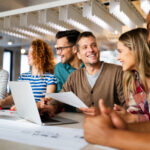
Author: Debbie Willis
Gen Z is more connected, tech-savvy, and driven by purpose than generations before theirs. As they enter the workforce, they’re looking for organizations that reflect their values, offer flexibility, and create opportunities for growth. These individuals have high expectations for their memberships. They want meaningful engagement opportunities and a sense of belonging within the communities they join.
Associations like yours are constantly challenged to be relevant to the next generation of potential members. By embracing modern trends, you can create a membership experience that resonates with younger demographics and encourages them to join your program. Let’s explore key strategies for connecting with young professionals.
Focus on Professional Development
LinkedIn’s 2024 Workplace Learning Report found that 8 in 10 people believe learning adds purpose to their work. Today’s employees are seeking out and spending more time on learning and development (L&D) opportunities that:
- Help make progress towards career goals
- Keep them up-to-date in their fields
- Are personalized for their interests and career goals
Gen Z is particularly interested in learning opportunities that fuel professional progress. 53% of Gen Z agreed that learning allows them to explore potential career paths at their companies. That’s 16 percentage points higher than the Millennials, Gen Xers, and Baby Boomers who were surveyed!
L&D is one of the primary reasons people join associations, especially for individuals who are just starting out in the field. It brings them up to speed by offering training that their employers might not provide.
Creating Your Professional Development Opportunities
Learning comes in many forms! You might provide workshops, mentorship programs, industry reports, or interactive courses that fuel growth. Consider offering a variety of opportunities to cater to different learning styles.
One of the best emerging opportunities is online courses. This form of eLearning combines the power of effective professional development with the convenience of the online space.
Using an association LMS, you can create tailored learning pathways that allow members to chart their own development journeys and choose opportunities that align with their professional goals. You’ll create a structured sequence of courses that guide learners through a specific topic or skill development process. Members can complete courses at their own pace, earn relevant certifications, and ultimately fuel their own development.

Let’s say you’re creating a professional development pathway for marketing professionals. You might offer these modules:
- Module 1: Introduction to Digital Marketing – A course that covers the fundamentals of digital marketing with the goal of understanding key marketing concepts and tools
- Module 2: Social Media Marketing – A course focusing on social media content creation, paid social ads, and audience engagement strategies
- Module 3: SEM Strategies – A deeper dive into search engine marketing (SEM) that explores topics like keyword research, on-page SEO, and PPC campaigns
- Module 4: Data-Driven Marketing – Insights into collecting, analyzing, and using marketing data, covering topics like Google Analytics, data visualization, customer segmentation, and A/B testing
- Assessment: Marketing Professional Certification – An exam that tests knowledge and skills gained through the pathway in order to earn an official certification
Learning pathways are effective for personalizing engagement opportunities at scale. Depending on your LMS, you might be able to create your own courses or use prebuilt content and resources. You can even offer industry-recognized certifications that appeal to younger members who are looking to improve their resumes.
TopClass recommends choosing an LMS that integrates with other technologies, like your online community platform and member management system. You’ll be able to provide easy access to L&D opportunities, create more tailored learning paths for each user, track progress, and create collaborative learning experiences.
Embrace Digital Transformation
Younger generations prioritize convenience, flexibility, and accessibility, which makes embracing digital tools crucial for associations.
Digital engagement opportunities break down geographical barriers and offer instant access to content, making it easier for members to participate on their terms. By adopting these tools, associations can better reach younger members who value efficiency and on-demand access.
Digital transformation doesn’t stop with eLearning, so let’s explore some additional digital engagement opportunities for connecting with younger generations.
Online Events
Virtual events and webinars provide an accessible way to engage members without the barriers of location or travel costs. These events can be accessed from anywhere, at any time, offering a convenient option for busy, tech-savvy members.
If you have an online community, you can create a dedicated space where members can register for upcoming events, join live sessions, and view recorded content. Consider hosting different types of online events that provide value to members, such as industry-specific webinars, career development workshops, networking events, or panel discussions.
Make these events interactive by offering opportunities like:
- Breakout rooms for smaller, focused discussions that allow attendees to network or dive deeper into specific topics in an intimate setting.
- Chat functionality to allow participants to share thoughts, ask questions, and interact with speakers and fellow attendees.
- Live polling to encourage members to voice opinions or participate in fun quizzes during sessions.
Virtual event tools like Zoom offer these interactive features, helping you create more engaging event experiences.
Mobile App
Younger generations value the flexibility that their mobile devices offer. A mobile app for your association allows members to engage in discussions, browse events, and access learning materials anytime, anywhere on their smartphones.
With a mobile app, members can take courses, track their progress, or complete certifications on the go, so they can integrate learning into their daily routines. For younger, tech-savvy members, this flexibility is a key draw.
Clowder highlights several mobile app features for associations that draw engagement, such as:
- A newsfeed to keep members updated with the latest announcements and content related to their interests
- A resource library to access whitepapers, case studies, courses, and other educational materials
- Member forums that allow members to discuss topics, share knowledge, and solve problems together
- One-to-one messaging that enables members to connect with others directly, share opportunities, and seek advice
- Group and chapter segmentation to organize members based on geographic area and professional interests, which is great for fostering micro-communities within your association
- Event and conference management so members can discover, register, and plan out their participation in your association’s events.
You’ll also be able to send push notifications to keep members informed about new courses, upcoming events, or other important updates. With timely reminders and updates, they’ll never be out of the loop!
Offer Flexible Membership Options
Younger members often have different needs when joining associations, such as affordability, flexibility, and the opportunity to explore membership benefits before committing. To make a membership offer that younger generations can’t refuse, you’ll need to consider these needs and preferences.
You might implement tiered membership options, allowing members to choose the level of benefits that best suit their preferences and budget. For example, a basic tier could offer access to essential resources, while a premium tier could provide additional perks like exclusive content or networking opportunities. Additionally, offering discounts to students or early-career professionals can make membership more accessible to younger members who may be on a tighter budget.
To take flexibility one step further, consider offering shorter commitment periods, such as a six-month trial membership. This gives newer members the chance to determine your association’s value before committing to a longer-term membership.
Younger members often have different needs when joining associations, such as affordability, flexibility, and the opportunity to explore membership benefits before committing. To make a membership offer that younger generations can’t refuse, you’ll need to consider these needs and preferences.
You might implement tiered membership options, allowing members to choose the level of benefits that best suit their preferences and budget. For example, a basic tier could offer access to essential resources, while a premium tier could provide additional perks like exclusive content or networking opportunities. Additionally, offering discounts to students or early-career professionals can make membership more accessible to younger members who may be on a tighter budget.
To take flexibility one step further, consider offering shorter commitment periods, such as a six-month trial membership. This gives newer members the chance to determine your association’s value before committing to a longer-term membership.
Foster a Sense of Community
For many younger professionals who are just entering the field, forming connections and building a network is a major benefit of association membership. A strong sense of community provides a support system and helps them navigate their careers with greater confidence.
An online community is an invaluable tool for fostering this sense of belonging. It serves as a one-stop shop for association activities, including events, networking, membership management, and learning opportunities. By centralizing these opportunities into one platform, you make engaging with your association’s community a breeze!
When implementing your LMS, check whether it offers social learning features, such as discussion forums or group collaboration. This enables members to connect over shared learning experiences and helps build a supportive community that keeps younger members engaged in your association.
In addition to online opportunities, you might offer social events, such as informal meetups, networking events, and community volunteer opportunities. Forming interest-based groups or committees also gives members a chance to collaborate on shared goals and passions.
Start Improving Your Membership Program!
The future of your association lies in the hands of the next generation of leaders. Younger professionals have different preferences, values, and expectations from older generations. To remain relevant and grow, your association should evolve its strategies to meet these needs.
By focusing on the elements we suggested, you’ll create unique value that younger professionals won’t want to pass up.
Get started by evaluating your current opportunities. Do you provide plenty of online opportunities, particularly for learning? Are your membership options flexible? Can you do more to create a vibrant community? Focus on improving one of these areas to start and watch as your members become more active!
2025 Association Management Trends: What Smart Leaders Are Doing Differently 30 Apr 2025, 5:34 pm

2025 Association Management Trends: What Smart Leaders Are Doing Differently
In 2025, associations are facing a new kind of pressure—and a new kind of opportunity. The old playbooks aren’t working like they used to. Member loyalty is softening, younger professionals are staying on the sidelines, and non-dues revenue is under strain. At the same time, expectations for personalization, digital engagement, and demonstrated value have never been higher.
Our new whitepaper, 2025 Association Management Trends: What Smart Leaders Are Doing Differently, digs into these challenges and offers a clear path forward. Backed by the most trusted industry research, it highlights six bold moves leading associations are making to stay relevant, grow smarter, and create lasting member value.
Whether you’re planning for growth or rethinking your strategy, this is your must-read briefing for the year ahead.
The Big Picture: Growth Expectations vs. Strategic Risk
The data shows optimism on the surface:
63% of associations expect membership to grow in 2025
74% anticipate higher engagement
63% project an increase in non-dues revenue
But that optimism masks deeper concerns. Retention is flat or declining for many organizations. Engagement tools are underused. Communications are fragmented. And most associations admit they aren’t fully executing on the strategies they know they need.
These gaps aren’t just operational—they’re existential. That’s why the smart leaders we work with aren’t just adjusting tactics. They’re rethinking their entire approach to member value, digital experience, and strategic alignment.
Key 2025 Association Industry Trends You Can’t Ignore
Here are just a few of the industry trends shaping the future of association growth:
1. Retention Is the New Growth
Many associations are still focused on acquisition, but the real leverage is in keeping the members they already have. The whitepaper explores how behavior-based segmentation and journey mapping can help reverse churn.
2. Young Professionals Are Still an Afterthought
According to Naylor, nearly half of associations don’t customize communication for early-career members. This is a critical blind spot—and one that’s limiting long-term sustainability.
3. Digital Investment ≠ Digital Impact
Community platforms, CRMs, and engagement tools are widely adopted, but poorly integrated. Only about 30% of associations report that their engagement systems are mostly or fully connected. In other words: digital fatigue without digital payoff.
4. Non-Dues Revenue Requires a Smarter Model
With 65% of associations citing non-dues revenue as a top challenge, it’s no longer a “nice to have.” Yet most organizations haven’t evolved their monetization strategies to match. We outline modern models that go beyond events and sponsorships—like subscription bundles, digital knowledge products, and partner-ready content ecosystems.
From Insight to Execution: Where Associations Fall Short
That’s why a key focus of the whitepaper is aligning strategy, staff, and systems. The most successful organizations aren’t necessarily bigger or better funded. They’re better focused and better aligned. They connect vision to budget, behavior to strategy, and tools to outcomes.
A Clear Roadmap for 2025 and Beyond
If you’re looking for a practical, data-driven look at the association management trends shaping the future, this whitepaper delivers. We’ve distilled it into six high-impact moves that every organization should be making this year—from rebuilding the member journey to embedding feedback into real-time decision-making.
It’s not about keeping up. It’s about taking the lead.
For more on association management trends, please see And the Survey Says … Associations Are Thriving in 2024, with a Bright Future Ahead.h
PODCAST The Path to Association Success: Lessons in Leadership and Influence With Chris Vaughan 8 Apr 2025, 6:11 pm


PODCAST Changing the Game for Associations: The Path to Sustainable Growth With Chris Vaughan 8 Apr 2025, 4:49 pm


VIDEO AMA’s Strategic Shift: Breakthroughs in Membership Growth 8 Apr 2025, 4:41 pm


PODCAST Relationships, Integrity, and Association Success with Chris Vaughan 8 Apr 2025, 4:39 pm


VIDEO Bright Futures: Innovative Directions for Associations 8 Apr 2025, 4:34 pm


A Brief Beginner’s Guide to Using AI for Associations 21 Mar 2025, 5:01 pm

Author: Debbie Willis
Is your association thriving? According to recent surveys, association executives feel more confident than ever, with 67% optimistic about their organization’s future growth and stability. While the reasons for this optimism vary, there’s no doubt that now is a promising time for associations to try experimental strategies, test out innovative tools, and explore new opportunities.
Artificial intelligence (AI) is a source of curiosity and game-changing potential for many forward-thinking organizations. In fact, 34% of surveyed associations have invested or plan to invest in AI this year. When used thoughtfully and ethically, AI can automate repetitive processes, streamline operations, and help associations reach their goals faster and smarter.
However, to maximize AI’s utility and prevent disruptions during its adoption, you must clearly outline why and how your association plans to use AI. Let’s walk through the basics of AI for associations to help you figure out where AI fits into your organization’s current strategy.
The Benefits of AI for Associations
AI has many uses for associations, from content creation support to data analytics. However, some organizations still hesitate to implement it due to concerns over cost, data privacy, and member pushback.
Is AI worth embracing at your association? Can it enhance your member value proposition? Consider these benefits:
- Streamline administrative processes. AI can automatically handle many routine duties, such as processing membership payments or sending out post-event emails to attendees. When members need support, you can use AI to answer frequently asked questions or resolve simple inquiries.
- Free up staff time. Beyond reducing time spent on administrative tasks, AI can drastically speed up activities such as research, content outlining, and proofreading. As a result, your staff can dedicate more time and attention to more complex responsibilities, such as securing corporate sponsorships or planning networking events that bring members together.
- Improve decision-making. AI can help your staff visualize and understand the data stored in your association’s membership management software, both at the individual member level and across your entire member base. By pinpointing trends and patterns, you can make more informed, data-backed decisions to refine your strategies.
Ultimately, AI can help you deliver the best member experience possible by improving your staff’s ability to work quickly, make strategic decisions, and focus on tasks that require a human touch.
Top Ways to Leverage AI for Associations
You’ve likely heard of ChatGPT, a popular AI chatbot that uses natural language processing (NLP) to answer questions, produce content, generate code, and more. However, depending on your association’s specific goals, ChatGPT is only one of many AI tools you may need.
For example, your association can use AI to:
- Create email templates. According to Fundraising Letters, membership renewal emails are more effective if you personalize them with the member’s name and involvement history. Ask ChatGPT to develop compelling subject lines that you can adjust to include each member’s name. Then, generate an email template you can fill with details related to the recipient.
- Improve accessibility. AI captioning tools like Rev allow you to produce real-time captions for your association’s online videos. Plus, if many of your members are multilingual, you can accommodate them by using Google Translate or DeepL to provide translated versions of educational and event materials.
- Share tailored content. iMIS’s guide to member engagement recommends providing each member with personalized resources, event reminders, and educational courses when they log into your association’s portal. With an AI-powered membership management system, you can automatically deliver this tailored content based on each member’s interests and past interactions on your website—no manual input required.
- Facilitate content creation. Whether you’re drafting a blog article, designing digital event flyers, or coming up with exam questions for an online course, ChatGPT can help you hit the ground running by generating content ideas and talking points.
- Research and evaluate software. From membership software to learning management systems (LMS), assembling the right technology toolkit for your association can be challenging. To simplify your research process, ask ChatGPT or try Google’s new AI Mode to compile answers to questions such as, “What standout features do [Software Option 1], [Software Option 2], and [Software Option 2] have for engaging members?”
Due to the versatility of these tools, your association can apply AI to support almost any strategy or goal. Start small and focus on a few specific projects or processes to avoid overwhelming your team with too many new workflows.
Considerations for Responsible AI Usage
To safely and effectively harness the power of AI for association management and member engagement, keep these considerations in mind:
- Data Security. Association databases store sensitive data, including member names, contact details, and payment details, that must be protected. Minimize security vulnerabilities by instructing staff to avoid inputting confidential information on unsecured generative AI platforms and apply any software updates immediately.
- Copyright. Since AI tools are trained on content produced by human authors, questions can arise regarding the rightful ownership of the content they generate. Encourage staff and members to use AI-generated outputs as inspiration when contributing content rather than using the text directly.
- Accuracy and Bias. Since AI tools are built using historical data and machine learning models, they may produce outputs that reflect biases or contain incorrect information. Check with AI vendors to ensure bias mitigation measures and transparency standards are in place. Require staff members to always fact-check AI-generated content before use.
- Transparency. Be upfront with members about your AI usage, especially how their data is involved, to avoid losing trust. For example, when you first incorporate AI, you might organize virtual Q&A sessions where members can directly ask your association’s leaders about your AI strategy. Additionally, allow members to opt out of having their information used for personalized recommendations or data analytics.
Above all, remember that AI is not a human replacement. Your association’s staff and volunteers possess the essential empathy, professional expertise, and ethical judgment that AI lacks. Approach AI tools as opportunities to enhance your team’s efforts while still keeping a human at the helm of your decision-making processes and engagement activities.
No two associations will use AI in the exact same way, so be patient and open-minded when introducing these tools to your organization. When developing your strategy, consider your budget, existing workflows, and member preferences.
After implementing AI, learn how it has impacted your member experience by reaching out through surveys. Ask members if they’re satisfied with your AI-enhanced services and content. If members share recommendations or concerns, address them immediately to maintain their trust and ensure you’re using AI as effectively as possible.
Association events are more than just lively gatherings—they’re powerful tools for strengthening your member community. Foster active event engagement by recognizing members, designing personalized experiences, providing professional development opportunities, and leveraging data for improvement. When members feel connected, supported, and appreciated, they are far more likely to stay engaged with your association.
Stay on top of members’ evolving needs to maximize retention. With thoughtful planning and a commitment to continuous improvement, your association can turn its events into a key driver of long-term member loyalty.
4 Ways Association Events Can Boost Member Retention 21 Mar 2025, 2:23 pm

Author: Daria Knupp
It’s no secret that keeping existing members engaged is more cost-effective than constantly acquiring new ones. One of the most powerful ways to boost retention is through association events. Well-planned events create opportunities for members to connect, learn, and find value in their membership, making them more likely to stay involved long-term.
In this article, we’ll explore four ways association events can boost member retention, offering actionable insights to help your association design events that enhance engagement and long-term membership value.
1. Recognizing and Rewarding Members
Recognition strengthens loyalty by making individuals feel like valued members of your association’s community. Events provide the perfect platform for celebrating achievements and reinforcing belonging and commitment. For example:
- Award ceremonies highlight leadership, volunteer efforts, and industry accomplishments, inspiring others to stay engaged.
- Member appreciation events, from social receptions to milestone celebrations, further emphasize the value of membership.
- Small gestures, like spotlighting members in event programs or offering speaking opportunities, create an overall culture of appreciation.
When members feel seen and valued, they are more likely to remain active and engaged long-term.
2. Offering Personalized and Tailored Event Experiences
A one-size-fits-all approach to events can leave some members feeling disconnected. Personalization makes events more engaging by aligning content and experiences with individual member needs, creating a deeper sense of value and investment in your association.
Segmented event tracks cater to different experience levels, industries, or interests, ensuring each member finds relevant programming. Whether through specialized breakout sessions, hands-on workshops, or networking groups, incorporate tailored content to enhance engagement and retention.
Interactive event formats also help keep members actively involved. Peer-led discussions, roundtables, and mentorship sessions create meaningful connections, while Q&A panels and live polling encourage participation. When you plan events that resonate with each member’s
3. Providing Valuable Professional Development Opportunities
One of the key reasons members join and stay in an association is to access professional development opportunities. Events that offer meaningful learning experiences help members grow in their careers, making their membership more valuable and increasing retention.
For instance, you might provide:
Educational Workshops and Industry Insights
Keep members engaged by allowing them to continuously learn and advance in their field. Association events can serve as a hub for industry education by offering:
- Workshops and Training Sessions: Hands-on learning experiences that help members gain new skills
- Industry Trend Discussions: Panels and roundtables that provide insights into emerging trends
- Certifications and Continuing Education Credits: Credits or certification programs that members need to maintain their professional standing
Align your event programming with members’ professional goals to reinforce the value of membership and create more compelling reasons to stay engaged.
Exclusive Access to Thought Leaders
Gaining direct access to industry experts and thought leaders is another major benefit that can improve member retention. Your association’s events can feature:
- Keynote Speakers: Renowned professionals who provide insights and inspiration
- Executive Roundtables: Small group discussions with industry leaders, fostering mentorship and high-value networking
- Fireside Chats and Q&A Sessions: Opportunities for members to engage directly with experts and gain insights tailored to their challenges
These experiences provide value that members can’t easily find elsewhere, making your association an indispensable resource for their career growth.
By developing a strategy that consistently offers high-quality educational experiences and exclusive access to industry leaders, your association can strengthen its reputation as a professional development resource, increasing member satisfaction and long-term retention.
4. Improving the Member Experience With Event Data
Events provide valuable insights into member behavior, preferences, and engagement levels. By analyzing event data, your association can refine its strategies and continue delivering experiences that keep members coming back.
Collect and act on member feedback after each event. Use post-event surveys, live polling, and session ratings to understand what worked well and what you should improve. When members see their feedback reflected in future events, they’ll feel heard and valued, strengthening their connection to your association.
Additionally, use your event management platform to track engagement metrics, such as attendance rates, session participation, and networking interactions. Use this data to identify trends to inform your planning the next time around. If certain event types or topics consistently attract high engagement, prioritize similar experiences down the line. With these data-driven insights, your association can plan events that better meet member expectations, increasing their satisfaction and retention.
Association events are more than just lively gatherings—they’re powerful tools for strengthening your member community. Foster active event engagement by recognizing members, designing personalized experiences, providing professional development opportunities, and leveraging data for improvement. When members feel connected, supported, and appreciated, they are far more likely to stay engaged with your association.
Stay on top of members’ evolving needs to maximize retention. With thoughtful planning and a commitment to continuous improvement, your association can turn its events into a key driver of long-term member loyalty.
Make Your Membership Into An Offer They Can’t Refuse 3 Feb 2025, 4:59 pm

Author: Lomesh Shah
When it comes to growing your association’s membership base, the first thing you should consider is your offerings. After all, members join your association for benefits, and if you’re experiencing slowed growth, chances are that either your offerings aren’t up to par or you’re not communicating them well.
When marketing your association, you need a rock-solid membership value proposition, which essentially explains why someone should join your association. You might promote your unbeatable member engagement activities, cutting-edge course offerings, or vibrant community full of networking opportunities.
To craft a membership offer your association’s audience won’t be able to refuse, explore these top four recommendations for improving benefits and creating a compelling value proposition.
1. Add Member Value, Don't Discount Dues
In a classic supply vs. demand model, the answer to lower demand is to decrease prices. However, lowering your dues rate might be a mistake. After all, if members aren’t finding much value in your offerings when they cost $100, there’s no guarantee they will suddenly become interested in them when they cost $50. By going down this path, associations often end up sacrificing significant revenue with little to show for membership growth.
Of course, this doesn’t mean you shouldn’t reconsider your pricing model to engage and retain members. When it comes to adjusting your membership fees, consider these strategies:
- Offer discounts to specific audience segments. A more innovative approach is to lower dues for specific segments like students and young professionals who may be more cost-sensitive. This strategy helps fill your association with potential future members who will eventually pay full dues.
- Experiment with an open-door membership model. Create a free membership tier with an open-door model. This approach gives free members access to limited benefits so they can see what your association has to offer, and you can entice them to upgrade by promoting gated opportunities.
- Provide new member specials. Get new members in the door with special offers and discounts. For example, you could offer a discounted rate for the first year of membership or provide new members with exclusive savings, such as discount codes for courses or ticketed events.
Remember that lowering costs alone doesn’t automatically make your membership more valuable in the eyes of potential members. To attract members, you need to offer a compelling membership value proposition.
If you use any of these pricing strategies, leverage your association’s membership software to monitor affected members’ behavior. For instance, you might notice members who take advantage of new member specials leave your association when their discounts expire, signaling a need for stronger long-term benefits.
2. Bundling Benefits Builds Member Value
Increasing awareness of benefits is crucial; otherwise, they hold no value for members. Lack of awareness of benefits often comes from two scenarios
- Benefits are not articulated well. If members are unclear what they are purchasing when they buy a membership, they will likely not be able to tap into their benefits.
- Benefits are confusing. Sometimes, associations offer so many benefits that members have trouble understanding what their membership level provides, figuring out how to access benefits, and knowing what is valuable to engage with.
If the second scenario sounds like your association, one solution might be to bundle benefits together into organized membership tiers rather than individual sales offerings. This not only makes high-value opportunities more enticing and accessible but also allows for the removal of outdated benefits that clutter communication with members.
Reframing the concept of “products” to encompass all the ways the organization serves its members opens up opportunities to highlight the value proposition of membership and why potential members should be interested.
This approach also allows you to highlight the value of offerings you might not be able to sell directly. For instance, you might promote access to your membership network through your community engagement platform as a base-level benefit.
3. Make Member Value Crystal Clear
Ensuring that membership benefits are well-defined is essential for retaining members. Prospective and existing members can only fully appreciate and take advantage of the value you offer if they are clearly aware of what they receive through their membership.
Many organizations that offer membership encounter a challenge in renewing first-year members. Tradewing’s guide to member engagement suggests providing new members with a welcome kit that introduces them to your association and teaches them how to leverage their benefits. A few items you might include in this kit include the following:
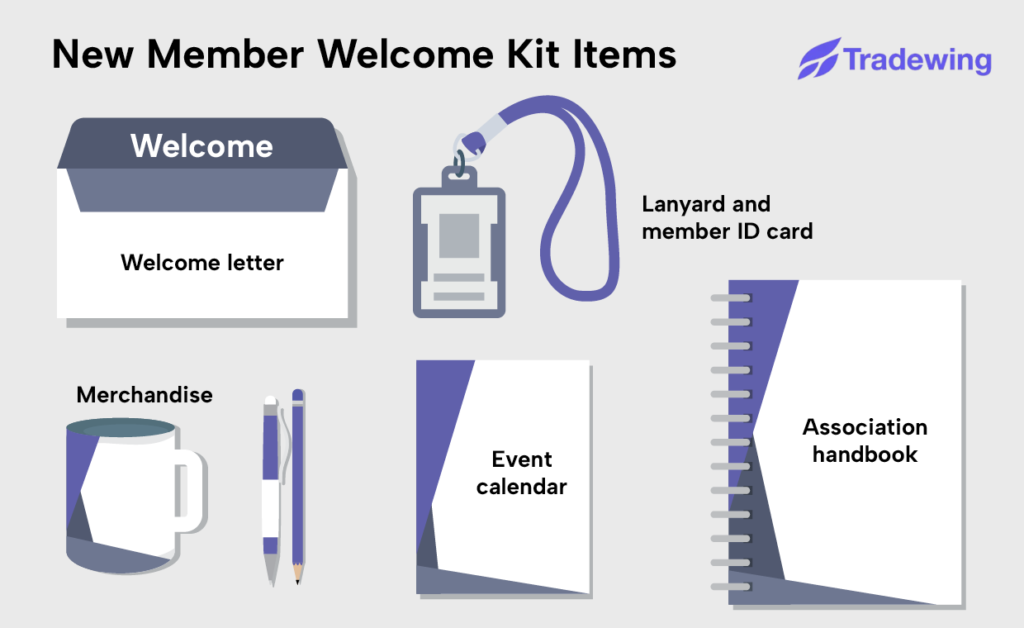
- Welcome letter
- Lanyard and member ID card
- Branded merchandise
- Event calendar
- Association handbook
While your events and association guidelines may change over time, providing initial physical copies can prompt greater initial engagement from new members. Be sure these items also include directions for accessing future benefits. For instance, you might add a QR code for your online event calendar to your printed copy.
4. Offer a Grace Period
Members will often decide if your association’s benefits are truly worth it when it’s time to renew. Ensure they have plenty of time to thoroughly weigh your offerings by providing a renewal grace period. Additionally, grace periods provide a few other benefits, such as:
- Time to clear up renewal issues. By providing grace periods, you allow members to rectify any oversights in renewing their membership while still having access to all the benefits and perks associated with their membership.
- Multiple chances to renew. Members often lapse because they simply forget to renew. As Fundraising Letters’ selection of membership renewal letter templates explains, it’s highly possible for busy members to miss your email telling them their renewal period is coming up. With an extended grace period, you have multiple opportunities to check in and ensure members don’t lapse due to poor communication.
- Opportunity for last-minute offerings. Keep an eye on members reaching the end of their grace period, and consider reaching out with special offerings to continue with your association. For example, you might provide them with free membership for the first month of their next year.
The length of your grace period depends on your association’s membership model and offerings. Some associations might offer just a couple of weeks, while others might provide multiple months before cutting off benefits.
Conclusion: A Membership Value Proposition They Can't Refuse
In conclusion, consider the possibility of a membership value proposition that professionals can’t refuse. With the potential to restructure your current model and create an irresistible offer, your association can capture members’ attention and loyalty. Take advantage of this chance to provide a value proposition that stands out and keeps your community engaged.
4 Tips for Personalizing Member Engagement Opportunities 14 Jan 2025, 12:55 pm

By: Karin Tracy
Simple member engagement strategies such as sending monthly email newsletters and promoting an annual conference still have their place in association management practices. However, to compete with peer organizations, brands, and other digital distractions, associations must take a personalized approach.
Personalizing the communications, engagement opportunities, and benefits your association offers its members can enhance engagement and retention. Members will feel understood, and their perceived value of your offerings will grow.
Providing personalized experiences on a large scale can be challenging. We’ll explore four strategies for doing so, starting with using the right technology.
1. Use robust, specialized technology.
Effective personalization starts with good—or clean, accurate, and up-to-date—data. To achieve this at scale, your association needs technology to organize and analyze vast amounts of member data.
The following solutions and tools will help you better understand member data and roll out personalized engagement opportunities:
- Association management software (AMS): Your AMS primarily oversees everyday operations, plans events, and deploys communications. Implement an AMS offering predictive analytics and AI-driven insights to identify patterns in member engagement data and execute engagement opportunities.
- Constituent relationship management (CRM) system: CRMs store and organize data about your members, such as demographics, engagement history, and membership status. Use this data to segment members based on custom criteria and share targeted messaging that appeals to the members in that group. For instance, create a segment of members searching for jobs and share job board updates and invitations to networking events.
- Automation: Your AMS or integrated marketing solutions may include automation features, which initiate tasks triggered by a certain action (e.g., a member renews their membership and receives a thank-you email). Use these features to automate repetitive tasks like sharing membership renewal reminders, processing payments, and managing event registrations. Automation ensures communications are consistent and timely, keeping members engaged in your programs.
- Artificial intelligence (AI): AI has many use cases in association management, from personalizing communications to predicting behaviors to drafting content. For instance, associations might use AI to predict which upcoming events a member would be interested in based on historical engagement data. Additionally, AI-powered chatbots are on the rise, providing instant, personalized responses to member queries at any time.
If your association chooses to use AI, keep ethical considerations in mind. AI solutions can generate inaccurate, biased, or misleading information, so vetting AI-generated content is crucial.
Additionally, it’s best to establish human touchpoints and guardrails in automated processes involving AI. This can prevent misleading information or bias from slipping through the cracks and ensure communications with members don’t feel robotic or canned. In other words, you’ll maintain a human touch.
2. Work with experts.
Personalization proves difficult—especially for mid-sized and large associations with multiple chapters—from both technical and strategic perspectives. In this case, your association should work with specialized consultants who can help plan your long-term strategies.
A consultant provides their experience and expertise to help associations grow. Typically, these experts conduct member research, develop innovative strategies backed by data insights, and help associations effectively communicate their value. They’ll also bring an outside perspective and knowledge of industry best practices that can help you enhance your operations.
Because technology plays such an integral role in personalizing communications and experiences, you may also need help from a technology consultant. These experts assist with implementation, updates, and routine maintenance. Depending on your needs, they can also provide ongoing support for your tech strategy, helping you customize your software to ensure your association gets the most out of the technology.
3. Consider members’ lifecycle stage
As Fonteva’s guide to member engagement explains, the typical association member lifecycle comprises five phases: awareness, recruitment, engagement, renewal, and reinstatement. Engagement opportunities should be tailored to the member’s place in this lifecycle, whether they are:
- New members: These are first-time, newly recruited members. Promote engagement opportunities to welcome new members and educate them on association offerings, such as a welcome email series or onboarding webinar.
- Tenured members: These are long-term members who have renewed at least once. Recommend ways to engage more deeply, such as participating in advanced continuing education courses, creating member-generated content, or serving in a leadership role.
- Members at risk of lapsing: These members are approaching their renewal date and have shown signs that they may not renew their membership (e.g., not attending meetings or interacting with content for a prolonged period). Engage them by providing a customized value proposition that aligns with their goals and interests, offering additional tailored benefits, or offering discounts.
Your association should also track each member’s renewal date and launch engaging, relevant communications that remind them of the value your association provides, no matter where they fall in their lifecycle.
For example, provide a calendar of upcoming events, educational courses, webinars, or other engagement opportunities they won’t want to miss. Clearly convey the added value they enjoy from being members and promote benefits that directly correspond with member needs and priorities. Clarify which offerings distinguish your association from its competitors and how this benefits members (e.g., you’re able to attract well-known figures in your industry to speak at conferences).
4. Frequently request feedback.
Regularly share forms to request feedback on the quality of the engagement opportunities, the recommendations you provide, whether opportunities meet members’ expectations, and how well they align with members’ current needs. Not only will this reveal gaps or areas for improvement, but you can also gain direct insight into members’ interests and priorities.
Pose questions like:
- How relevant do you find the content and communications you receive from us?
- How satisfied are you with the personalized recommendations or offers you’ve received from us?
- Do you feel our communications and recommendations are tailored to your needs or preferences? Why or why not?
- Which engagement opportunities have you participated in? How would you rate those experiences?
- Do you feel the association provides enough personalized interaction to keep you interested and engaged?
- What additional communications or initiatives would further enhance your experience?
Make sure to include questions related to accessibility. As Fíonta explains, digital accessibility must be an integral part of your association’s operations—in other words, you should consider accessibility from the first step of planning any new engagement opportunity. However, there may be unique opportunities to optimize for your members that they highlight via surveys.
Start by asking whether the experiences were accessible to each member, if they encountered barriers when accessing content or experiences, and if they were able to access content on various devices.
In an increasingly digital and hyper-personalized world, take advantage of what you know about members to provide the most enriching, valuable, and educational experiences possible. Personalized engagement opportunities keep members interested in the events, programs, and other offerings your association provides, helping them see the inherent value in their membership and boosting retention.
Optimizing The Member Experience on Your Association Website 14 Jan 2025, 12:46 pm

By: Sarah Ferguson
Imagine Trisha, a recent college graduate, joins your technical engineering association. She’s excited about the perks of membership, such as access to exclusive networking events, a mentorship program, and a job board.
However, once Trisha signs up for her membership, she notices that your association’s website is tricky to use. It’s challenging to find the resources your organization promised to provide, and there is a lot of outdated information to wade through to discover details about upcoming events and opportunities.
If you were in Trisha’s shoes, you would likely be unhappy with your decision to join the association and would probably not plan to renew your membership in the future—if you didn’t ask for your money back first!
This hypothetical scenario illustrates an important truth for all associations operating in the modern age: Your website is a critical tool that must meet your current and potential members’ expectations in order to keep your community healthy and experience long-term organizational success.
Association industry experts anticipate a bright future for associations in the new year—prepare for success now by improving the member experience on your organization’s website! Explore our top tips below.
1. Prioritize user-friendly navigation.
Begin by taking a critical look at your website’s navigation. It should be easy for website visitors to find the information they’re looking for, engage with your content, and take action. Here are some best practices to apply to ensure a seamless experience:
- Refine your navigation menu. Your top-level navigation menu should be simple, focusing on just a few main categories or pages. For most associations, these will be things like About Us, Member Resources, Donate, Events, Blog, and Contact Us. If you wish to feature other pages, you can nest them under these main categories using dropdown menus. Also, consider making your navigation menu sticky so it will stay visible at the top of the screen as visitors scroll down pages.
Add a search function. Sometimes, visitors will know exactly what information, resource, or tool they’re looking for when they land on your site. Prepare for these situations by incorporating a visible and easy-to-access search bar in your website header. You can further enhance the search experience by offering filter options or an autocomplete function.
Place calls to action in prominent places across the site. Calls to action are simple, eye-catching phrases that encourage website visitors to do something. Usually, you’ll want to use calls to action on your website to guide visitors to your most important action pages, like your membership registration page or donation page. Write eye-catching phrases like “Become a member now” or “Donate to join the fight today” and ensure your calls to action stand out visually, like on a prominent, colorful button. Use a tool like Google Analytics to monitor traffic to your action pages and improve your CTA strategy.
Organization on-page information logically. On the individual web page level, you should also ensure that information is organized logically. Use headings to organize your content, ensuring that different sections and subsections are marked with headers in sequentially descending order. (As a bonus, this is great for search engine optimization, as it helps search engines like Google understand your content more easily!)
Key Takeaway: Ensure it’s simple and easy for website visitors to find their way around your website and guide them toward your most important pages.
2. Set up a members portal.
To stand out as a first-choice association in your field or industry, you need to offer first-rate membership benefits—access to industry resources, discounts, community, and more. While the specifics of your membership program will depend on your organization and what you know about your members’ needs, you can set the tone for a great membership experience by offering a members portal on your website.
Membership portals provide members with a central hub of resources, information, and opportunities, as well as tools for managing membership.
Follow these steps to implement a members portal on your site:
- Choose a reliable membership management platform. A membership management platform integrates with your website and allows you to offer a members portal. When shopping for a membership platform, look for features like messaging, community forums, event registration and ticketing, the ability to create and share exclusive content, and volunteer management.
- Customize your platform. After you’ve implemented your chosen tool, customize it to match your organization’s brand. This will help members perceive your platform as reliable, trustworthy, and connected to your specific association. Once your members portal is up and running, members should be able to further customize their experience by configuring their dashboard to their liking or modifying notification preferences.
- Design a user-friendly interface. Your members portal should feature a well-organized dashboard and (like your website) be easy to navigate. Also, ensure the portal is mobile-optimized so members can easily access it from smartphones or tablets.
- Implement security measures. Keep your portal secure to maintain trust with your members. Add a CAPTCHA or email verification step to the membership registration process to prevent bot registrations. When members are prompted to make a password, require complex passwords that have a mixture of letters, numbers, and special characters. You can also offer two-factor authentication to further secure login and password information.
- Set up community and communication features. One of the best parts of joining an association is becoming part of a community. Ensure that members can message each other, participate in forums, and access member directories to expand their networks.
- Offer customer support. Members should have the support they need if they encounter issues using your members portal. Provide a help desk, knowledge base, or live chat to help troubleshoot technical issues and answer membership-related questions. Also provide your team’s contact information should issues or questions require more than these resources can provide.
Key Takeaway: A members portal can be the central online hub of your members’ experience with your organization. Brand the portal to your organization and cater the features to your members’ core needs.
3. Provide useful resources and important information.
Knowledge is power, and one of the biggest benefits of being an association member is having access to useful resources and important information that can help you take your career to the next level, take action for a cause you love, and more.
Note that you’ll want to keep some resources public and others exclusive to members only. You may also find it useful to share some resources or parts of resources with all website visitors to “tease” what your organization has to offer and encourage more people to sign up for a membership.
Here are some resources or types of information you may want to consider including on your website:
- Searchable member directory. Directories allow members to get to know other people in your association and connect with them. Ensure you revisit your directory regularly to ensure that all entries stay current.
- Educational materials. You likely have eBooks, whitepapers, case studies, research reports, and industry insights that association members will find useful. Store these in a resource library and ensure they’re in easy-to-access formats, like downloadable PDFs.
- Webinars and other recorded content. Webinars, conference sessions, and workshops are also effective ways for your association members to learn. Consider providing access to past event recordings.
- Events calendar. Offer an up-to-date events calendar that shows events, socials, conferences, webinars, and volunteer opportunities. Provide an easy-to-use registration tool so interested individuals can quickly sign up and secure their spot.
- Details on certification and training programs offered. If your association offers professional development opportunities, provide information on time, location, cost, and eligibility.
- Job board. Job boards or career centers where you feature open positions in your industry or field can be extremely helpful to job seekers in your community. Allow trustworthy organizations to share job openings, but ensure your team vets them before posting them to your community.
- Membership information. Provide comprehensive information on your membership program and the different tiers and benefits you offer. This will empower members (and non-members) to make educated decisions about joining your organization and at what level.
- Petition and letter templates. If your association does any advocacy work, you’ll want to set members up to help you take action. Provide pre-written letters, access to petitions, and social media post templates.
- Fundraising tools. According to Cornershop Creative’s digital fundraising guide, peer-to-peer (P2P) fundraisers and crowdfunding campaigns can effectively raise money for your organization. Equip members with customizable fundraising pages for P2P efforts or links to crowdfunding sites.
- Annual reports and impact information. Keep your website visitors in the loop about how things are going for your organization. Provide access to your most recent annual reports, financial statements, and impact information to promote transparency and honesty with everyone who interacts with your association.
- Blog posts. Share organizational updates, special announcements, and educational information on your blog. Regularly posting on your blog can help signal to all website visitors that your site is active and up to date.
Key Takeaway: Whatever resources and information you choose to share on your website, make sure to take the time to decide what will be available to everyone and what will only be available to members.
Your association’s website is a powerful tool for promoting your organization, connecting members, and encouraging action. Follow the tips above to ensure an excellent member experience on your site. As you do, you’ll retain more members and pave the way for a long and successful future as an association!
How to Refine Your Association’s Long-Term Strategy 26 Nov 2024, 2:00 pm

Written by: Erin Lemons
Do you have a five- or ten-year plan for your career? What about milestones you want to achieve in your personal life? If so, these plans likely influence your decisions and help you make consistent progress toward your goals.
Your association is no different. To innovate, grow, and offer more value to your members, you must make a comprehensive plan for the future.
We’ll cover the core elements of a successful long-term strategy and walk through top tips to boost your association’s member engagement, keep you motivated, and empower you to achieve your goals.
Write It Down
Writing out your association’s goals and plans for the future is key. While they don’t have to be set in stone, a written record serves as a fixed reference point you can look back at. Plus, it will get your staff members on the same page to coordinate your efforts.
In this written plan, make sure to document your:
● Mission and vision statements, which explain the purpose of your association, your broad goals, and vision for the future of your organization and its members. This is a good time to revisit or refine these elements if needed.
● Detailed growth and retention plans that lay out specific, measurable goals for acquisition, renewal, and retention rates. For example, perhaps you want to grow your membership by 50% in the next two years and maintain retention at 75% or more.
● Revenue and income diversification goals that detail specific profit margin targets, projected or desired growth, and income streams you must support or add. Maybe you want to start selling branded merchandise within the next year and sell a combined total of 200 shirts, coffee mugs, and notebooks.
● Existing or expected technology integrations that improve staff efficiency, member experiences, etc.
● New or ongoing initiatives, including current or future commitments to diversity, equity, and inclusion (DEI), sustainability pledges, and partnerships with nonprofits.
Identifying and tracking success metrics is crucial—this is how you’ll measure whether you achieve your goals. For this reason, Protech’s guide to association management technology recommends choosing software that centralizes and secures all important member information and touchpoints on one platform. This makes it simple to organize, analyze, and report data.
Seek out an expert.
Seek Out An Expert
As you create or refresh your long-term strategy, consider working with a consultant like Sequence Consulting, who specializes in this area. While consultants may be necessary for enterprise-level associations or those with very complex needs, any organization can benefit from this form of support.
A relationship with a consultant will improve outcomes for your association by:
- Lending extensive expertise and experience: Most consultants have worked with associations of various sizes and industries and experienced many of the common challenges associations face. This depth of experience gives them the ability to strategize and address problems in ways your internal team may not be able to.
- Offering new perspectives: Because your team works for the association daily, you don’t have a truly objective perspective of the organization. Consultants bring an outside vantage point to your association, identifying challenges and opportunities your team might miss otherwise.
- Providing additional time and resources: Your staff might not have time to dedicate to long-term goals and planning. Consultants can provide the focused work and expertise needed to strengthen your strategy. With this approach, you don’t have to ask for more from a staff member who is already stretched thin.
- Keeping strategies up-to-date: Part of a consultant’s job is staying educated on the latest trends and developments in your industry and association management in general. They’ll be able to share these kinds of insights to help your operations align with best practices, keeping your association modern and relevant.
Consultants can leverage what they know about your association and its goals to help you form a clear, sustainable, long-term vision, all without adding more responsibilities to your staff members’ plates.
Reevaluate Your Technology
Using technology that is outdated or that your association has outgrown could be holding your association back.
As you plan for the future, review your association management software (AMS) to ensure it is:
CRM-based, meaning that it is built on a robust, secure CRM that will collect and organize all relevant association data.
Compatible with other tools, such as third-party apps or software solutions your association already uses—incompatibility results in siloed, fragmented data.
Comprehensive, offering all of the features and capabilities your association needs to manage its daily operations.
Scalable, ensuring it doesn’t have restrictive caps on the number of members or staff accounts you can have.
Review any other tools your association uses, including learning management systems (LMS), event management tools, marketing technology, content management systems (CMS), and reporting tools. Eliminate any tools or subscriptions you aren’t using to save money.
This is also a great time to remedy technical debt. Technical debt occurs when organizations take shortcuts or use workarounds to adapt or customize technology on a faster timeline. While these solutions may be functional, they often cause issues with software performance and scalability. Identify technical debt and plan for or apply stable, long-term solutions when possible.
Make Room for Innovation
The future will hold scenarios, innovation, and new ideas you can’t predict now. For example, who would have thought just 10 years ago that artificial intelligence (AI) would be as advanced as it is today? To prepare for the unexpected, leave room for innovation—and possible setbacks—in your plan. In other words, ensure your long-term plan is flexible and adaptable rather than rigid.
One way to do this is by adapting an agile framework, a methodology used in software development to promote continuous development and iterative planning. You might incorporate shorter, cyclical planning cycles, regular strategy reviews, and frequent adaptations to your plan based on feedback and outcomes. For example, create a lean plan for using AI, implement the tools, gather feedback, and adapt your usage guidelines.
Prioritize the Ethical Use of AI
Generative AI is booming across many industries, including for-profit businesses, nonprofits, and both trade and professional associations. When using these powerful tools, keep ethics in mind to protect your organization and your members.
BWF’s guide to responsible AI recommends including these key guidelines in your ethical AI strategy:
- Maintain data privacy and security.
- Promote fairness and combat bias.
- Obtain members’ consent for AI fundraising and other activities.
- Provide transparency and clear explanations for your AI use.
- Mitigate negative impacts on donor relationships.
- Maintain human oversight.
- Define clear accountability structures.
- Train employees.
- Conduct an AI readiness assessment with a consultant.
Applying these guidelines will help you keep member data and proprietary information secure, protect your reputation, and enhance trust in your organization during this evolving era of technology.
It’s easy to get bogged down by everyday tasks or small bumps in the road and lose sight of your long-term goals. However, a detailed plan will be a reliable roadmap for your association’s journey forward, keeping your focus fixed on larger goals that require more time and resources to complete. Using this roadmap, you’ll become a more prepared, innovative, and accomplished organization that is well-equipped to meet its members’ needs.
Associations Make It All Work — You Just Didn’t Know It 27 Sep 2024, 4:48 pm

The Big Secret: Why Associations Matter
For more than twenty-three years, Sequence Consulting has dedicated itself to helping associations because, simply put, associations impact makes modern life possible. You might wonder why we focus exclusively on these organizations. Here’s the secret: by helping associations thrive, we’re making the world a better place.
Associations are the invisible engines powering nearly every aspect of society—from the technologies we use daily to the professionals safeguarding our health, wealth, and safety. Yet, their impact remains one of the world’s best-kept secrets.
What is an Association? More Than You Think
So, what exactly is an association? At its core, it’s a nonprofit where thousands—or even hundreds of thousands—of people unite around a common cause. Whether they’re fighting diseases, advancing industries, or supporting professions, associations exist to drive progress and serve the public good. In the US alone, there are over 40,000 associations, touching every imaginable sector.
From pharmacists and realtors to horse owners and software engineers, associations shape the spaces they serve. Without them, industries would lack the collaboration and standards that make innovation possible. And yes, while some associations may seem niche—like those for pet sitters or gravestone studies—each plays a crucial role in elevating the areas they represent.
Our association clients serve millions of members around the world and touch the lives of nearly every person on the planet. Like oxygen, you may never notice, but you would if they were gone.
Our association clients serve millions of members and touch the lives of nearly every person on the planet. Like oxygen, you may never notice them, but you would if they were gone.
Associations Impact: The Unsung Heroes of Everyday Life
Think about the device you’re holding right now. The network it’s connected to, the electricity powering it, and the software running on it all exist thanks to standards set by volunteers in associations. These organizations ensure that technology works seamlessly and that cars, planes, and even household appliances are safe.
The ethical guidelines followed by your doctor, lawyer, or accountant? Published by associations. The certifications that keep your mechanic, realtor, or therapist up to date? Administered by associations. Nearly all the continuing education that sharpens professionals’ skills? Also driven by associations. Without these organizations, professions—and the standards they rely on—wouldn’t exist.
Associations don’t just touch the workplace; they bring scientific and academic breakthroughs to life. They publish research, share knowledge, and foster innovation. The American Chemical Society, for example, maintains SciFinder, a database of every known molecule, supporting the entire field of modern chemistry. Essential resources like that exist in medicine, psychology, and many other fields, all supported by nonprofit membership organizations. Associations impact is everywhere, often quietly unnoticed.
Bringing People Together: The Power of Associations
Associations aren’t just about standards and education—they’re about people. Every year, more than 50 million individuals come together at association conventions and events. These gatherings fuel the exchange of ideas, create business opportunities, and ignite innovation across every sector.
Beyond events, associations fund research, drive community service programs, and lobby governments for policies that benefit the public. Whether advancing scientific discovery or improving policies that impact everyday life, associations work behind the scenes to push society forward.
Whether advancing scientific discovery or improving policies that impact everyday life, associations work behind the scenes to push society forward.
When We Realized Associations Change Everything
Our first client was AARP, the largest association in the US represents millions of older Americans, advocating for their rights, providing critical resources, and helping them stay active and informed.
When we worked with AARP, we helped them rethink how to engage their diverse member base more effectively. From understanding the unique needs of aging populations to modernizing their member benefits, we saw firsthand how AARP’s mission to improve the lives of older adults creates real, positive change in society.
Watching AARP invest deeply in services to provide even more value to millions of people showed us the transformative power associations can have. They’re not just helping individuals—they’re helping entire generations.
That’s why we love what we do. Every day, we support associations as they tackle society’s biggest challenges. By helping them grow their membership and amplify their associations impact, we know our work is improving industries, communities, and people’s lives.
To Associate Is Human: It’s In Our DNA
To associate is human—it’s in our nature to collaborate, share, and work toward something bigger than ourselves. In the US, this legacy goes back to 1766, when the Medical Society of New Jersey was founded to improve healthcare—a mission it continues today.
At their best, associations represent who we aspire to be—working together selflessly to solve problems, push progress, and make the world better. According to ASAE’s 2023 Impact Study, associations contributed over $100 billion to the US economy, employing more than a million people and supporting countless industries, from healthcare and education to technology and public service.
This commitment to service and innovation makes associations a vital, though often overlooked, part of modern life.
At their best, associations represent who we aspire to be—working together selflessly to solve problems, push progress, and make the world better.
Associations Lead the Way: Your Work Makes the World Go Round
In the end, as an association professional, you’re not just managing operations—you’re driving real impact. You’re the catalyst behind the standards, innovations, and connections that power entire industries. Whether you’re elevating member value, advocating for change, or fostering collaboration, your work is at the core of what makes progress possible.
Don’t forget: your efforts are crucial. Keep raising the bar. Associations like yours don’t just support the world—they make the world go round.
For more on Associations Impact, please Forget Unicorns, Think Platypi: Why Associations Are Better Than Corporations and The Seven Habits of Highly Effective Association Leaders.
Build a Successful Consulting Partnership: Strategies for Client Success 6 Sep 2024, 4:05 pm

We’ve all heard the saying, “Clients get the consulting they deserve.” At Sequence Consulting, we’ve seen firsthand how successful consulting relationships are built through trust, collaboration, and clear communication. In our 23 years of consulting, great clients inspire our best work by embodying these qualities. Let’s explore how you can create a successful consulting relationship to get the best results from your consultant.
A Client Success Story: How to Foster a Successful Consulting Relationship
A prominent industry association was facing declining membership and a loss of relevance in their field. Their CEO, recognizing the need for change, partnered with Sequence Consulting. What set this leader apart as a great client was their embodiment of the qualities that drive successful consulting relationships. They were open about the association’s challenges, sharing internal data and candidly discussing pain points. They fostered a collaborative environment, treating the consultants as true partners rather than just service providers.
This CEO also demonstrated that they had high expectations while remaining flexible and open to creative solutions. Their optimism and belief in the potential for change were contagious, inspiring the team to work towards a powerful shared vision. This leader’s active participation and embodiment of these qualities were instrumental in allowing us to do our best work and deliver the full potential of our engagement, resulting in a revitalized association and a model for a successful consulting relationships.
Exceptional consulting isn't just about the consultant's expertise. It's about the partnership that happens when both sides are committed to excellent outcomes.
10 Steps to Build a Successful Consulting Relationship
- Be Open: Transparency is the foundation of any successful consulting relationship. Be willing to listen to new ideas and embrace different perspectives.
- Be Direct: Your feedback is invaluable to us. Don't hold back – tell us what you like, don't like, and want to see changed.
- Be Collaborative: True collaboration is essential for creating a successful consulting relationship. When clients and consultants work closely, the results are always better.
- Be (Gently) Demanding: You're making a significant investment and deserve exceptional results. Set high expectations, but remember that the best solutions often emerge through flexibility and open communication.
- Be a Champion: While we're the experts on the problem, you're the expert on your organization. Help us navigate internal dynamics, rally support for the project, and bring the right people on board.
- Be Reasonable: We're always willing to go the extra mile, but remember that scope creep can derail a project. Let's work together to prioritize and focus on the most impactful efforts.
- Be Responsive: We know you're busy, but your timely responses keep the project moving forward. Your engagement sends a powerful message about the importance of this work.
- Be Growth-Minded: Embrace change. Be willing to experiment, learn, and evolve. Your commitment to growth will inspire us to push boundaries and deliver truly transformative solutions.
- Appreciative: We're passionate about delivering value and helping you succeed. Your positive feedback motivates us and helps us understand what makes you tick.
- Be Optimistic: You hired us because you believe in the power of change. Believe we can make change possible, and we'll work tirelessly to solve your toughest challenges.
Conclusion
Building a successful consulting relationship is about more than just completing a project—it’s about creating a lasting partnership that drives continuous improvement and success. At its core, this relationship is built on mutual trust, respect, and open communication. Trust allows your consultant to push boundaries, propose innovative solutions, and offer candid feedback, even when it’s difficult to hear. When clients provide this trust and give consultants the freedom to explore creative approaches, the potential for groundbreaking results increases. At the same time, a successful relationship requires the consultant to understand the client’s unique needs, culture, and challenges, treating the organization as more than just a series of deliverables. This mutual investment leads to a dynamic exchange of ideas, fostering an environment where solutions are not just implemented but fully embraced and sustained over time.
However, trust alone isn’t enough. A successful consulting relationship also thrives on collaboration and a commitment to shared growth. Clients who take an active role in the consulting process, offering timely feedback, navigating internal dynamics, and championing the project, see the greatest results. By staying engaged and growth-minded, you encourage your consultant to go the extra mile, ensuring that recommendations are tailored, practical, and impactful. Ultimately, the strongest consulting partnerships are those where both sides are invested in the long-term success of the project. As a client, you play a pivotal role in shaping this partnership. By embracing these qualities—openness, collaboration, trust, and a commitment to growth—you set the stage for transformative outcomes that can take your organization to new heights. Remember, a great consultant can unlock potential, but a successful consulting relationship will unleash it.
For more on successful client relationships please see Sequence Consulting’s Articles & Research page and What the Very Best Clients Do by David A. Fields.
And the Survey Says … Associations Are Thriving in 2024, with a Bright Future Ahead 3 Sep 2024, 5:59 pm

What does the future hold for associations in 2024 and beyond? Recent surveys paint a vibrant picture of growth driven by positive economic indicators and a renewed focus on member engagement. This article uncovers the key survey insights, offering a data-driven look at the trends and opportunities shaping association industry trends.
Turning the Tide: Association Executives Optimistic About Growth
Confidence among association executives is at an all-time high. A remarkable 67% now express optimism about their organizations’ future growth and sustainability, up from 24% in 2023.1 Notably, 70% of Millennials report feeling very or extremely confident,2 a testament to the belief in the industry’s strategic direction and innovative initiatives

A Year of Growth: Associations Poised for Financial Gains in 2024

The financial forecast for associations in 2024 is decidedly optimistic. With anticipated membership, renewals, engagement, and overall revenue increases,¹ associations are poised for growth. Bolstering this confidence, 60% of associations are confident in reaching their revenue goals for the year.² This optimism is further reinforced by stable or growing marketing budgets, with over 40% of associations expecting their budgets for recruitment and engagement to either increase or hold steady.³
Even with inflationary pressures, 48% of associations anticipate only moderate increases in dues and non-dues prices.¹ This careful balance between budget management and financial optimism demonstrates thoughtful planning and strategic foresight within associations, paving the way for continued association industry trends for growth and stability.
Confidence among association executives is at an all-time high, with 67% expressing optimism about their organizations' future growth and sustainability, up from 24% in 2023
Association Industry Trends: Surging Membership and Engagement
Membership growth is a vital sign of an association’s vitality, and the data for 2024 is nothing short of encouraging. A substantial 61% of associations anticipate an increase in net membership count, with 56% projecting growth in non-dues revenue and 53% expecting overall revenue to rise.¹
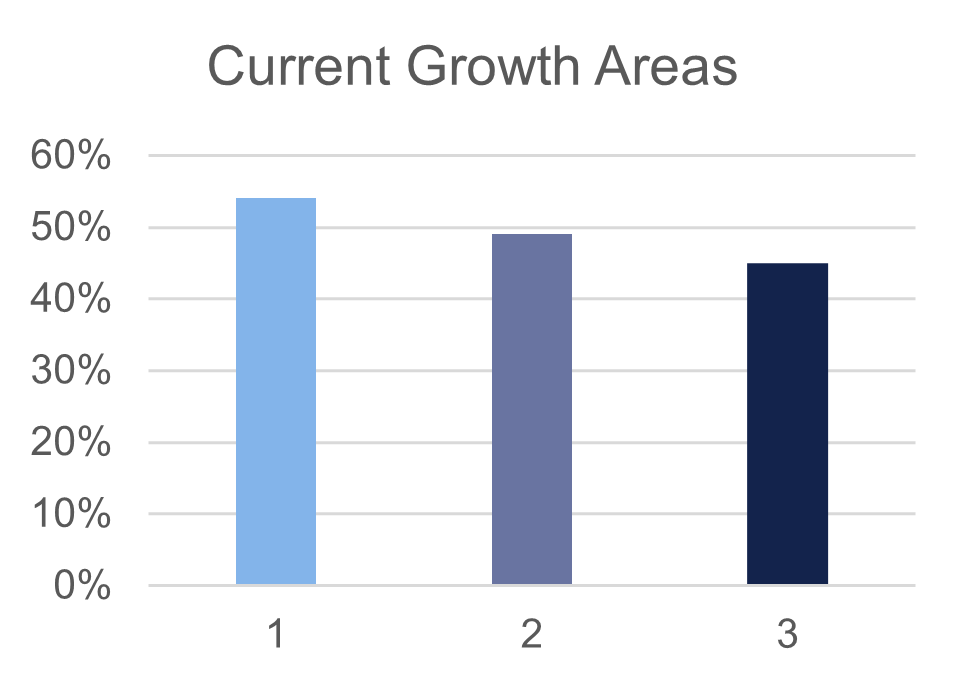
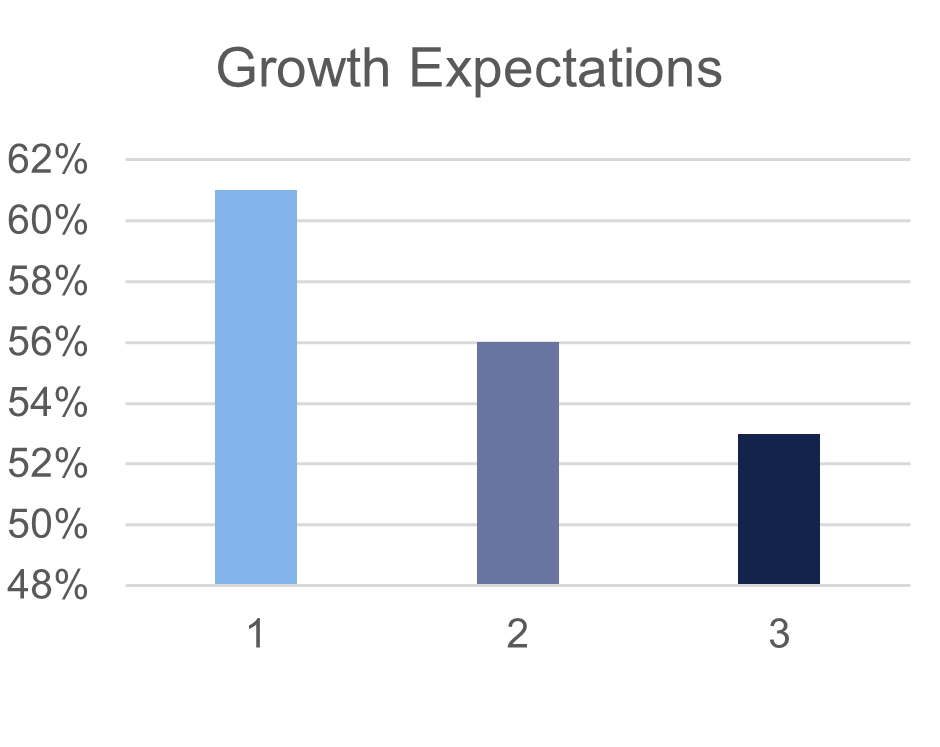
A substantial 61% of associations anticipate an increase in net membership count, signaling a vibrant future ahead
Back to the Ballroom: In-Person Events Regain Popularity
In 2024, associations are rediscovering the power of in-person events. A striking 61% plan to focus solely on in-person gatherings this year,² signaling a return to traditional engagement methods that foster deeper connections. This shift reflects a recognition of the unique benefits that in-person events offer: the ability to network, build relationships, and foster a sense of community that virtual formats often struggle to replicate.
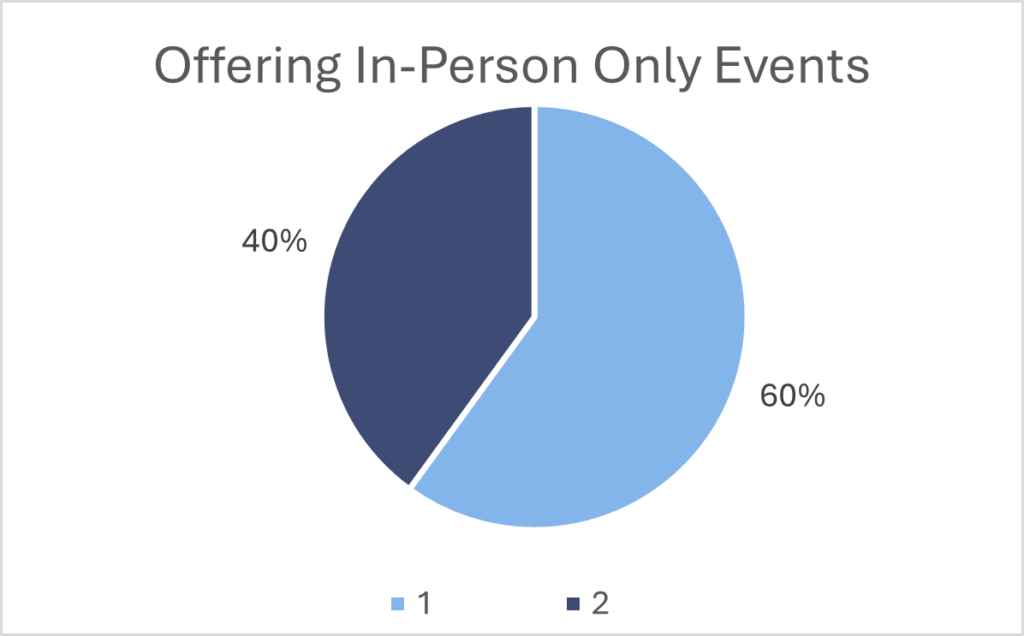
The Next Chapter: What's in Store for Associations in 2025 and Beyond?
The promising outlook of 2024 is poised to propel the association industry into a dynamic future in 2025. Building on current association industry trends and embracing emerging technologies, the landscape is set for continued progress:
• Accelerated Growth: The momentum in membership and revenue is expected to surge forward in 2025, driven by targeted efforts to attract and retain members through innovative programs and services.
• Technological Transformation: Associations will increasingly leverage cutting-edge technology like artificial intelligence (AI) and automation to optimize operations, elevate member experiences, and unlock valuable insights from data.
• Hybrid Event Evolution: While in-person events will remain a cornerstone, hybrid models will gain prominence, providing greater flexibility and inclusivity for diverse audiences.
Looking towards 2025, association industry trends are even brighter, with emerging technologies and a renewed focus on member engagement driving the future of associations.
Conclusion: A Bright Future Beckons
The association industry is thriving in 2024. The current landscape is undeniably positive, with surging confidence, strong financials, booming membership, and the return of in-person events. Looking towards 2025, the horizon is even brighter. The momentum built this year, combined with the potential of emerging technologies and a renewed focus on member engagement, suggests that associations are ready for whatever comes next and eager to shape it.
By embracing innovation, remaining adaptable to the ever-evolving needs of their members, and staying ahead of the curve on emerging trends, associations are poised to continue on this upward trajectory. The associations that seize the opportunities presented in this dynamic environment will solidify their position in 2025 and set a new standard for excellence and innovation within the industry. The stage is set for a new era of association success – and it’s just getting started.
For more information on association industry trends, please see Association Management Trends 2024: Embrace the Change.
Forget Unicorns, Think Platypi: Why Associations Are Better Than Corporations 23 May 2024, 5:23 pm
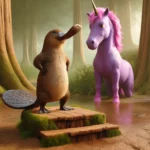
The Myth of the Unicorn: Why Your Association Doesn't Need to Be One
In the realm of successful organizations, Silicon Valley’s “purple unicorns” – those rare, highly valued startups like Apple, Amazon, or Google – often steal the spotlight. Their strategic efficiency and innovation engines seem unmatched. Yet, another type of organization, less flashy but equally effective, deserves recognition: associations. Think of them as the platypuses of the organizational world.
While unicorns are celebrated for their mythical allure, platypuses, with their duck-like bills, beaver-like tails, and egg-laying habits, are often misunderstood. Yet, these seemingly bizarre creatures are perfectly adapted to their environments, thriving where others fail. Similarly, associations with unique structures and goals frequently outperform corporate giants in their specialized niches.
Newcomers to association leadership, especially those from corporate backgrounds, might find this surprising. But associations’ seemingly chaotic nature is intentional, and it’s precisely what makes them thrive.
1. The Triple Bottom Line Advantage
Newcomers to the association world, especially those from corporate backgrounds, might find this surprising. But associations' seemingly chaotic nature is intentional, and it's precisely what makes them thrive.
Unlike corporations, where profit reigns supreme, associations dance to the rhythm of a different drum – the Triple Bottom Line. This unique approach to success is an association leadership balancing act that requires juggling three equally important factors:
Mission: The North Star of any association. This is the fundamental reason for its existence, the change it seeks to make in the world. A strong mission guides every decision, from strategic planning to daily operations. It’s the soul of the organization, the driving force behind its work.
Member Value: More than just a membership card or a newsletter, member value encompasses the tangible and intangible benefits that members receive. It’s about providing relevant resources, fostering a sense of community, advocating for their interests, and ultimately, enriching their lives and careers. Associations thrive when they consistently deliver value that exceeds member expectations.
Money: While not the sole focus, financial sustainability is essential for any association. It enables the organization to invest in its mission, provide valuable services to members, and adapt to changing needs. But money is a means to an end, not the end itself. Associations must always remember that their financial decisions should align with their mission and serve the interests of their members.
The Triple Bottom Line is not just a buzzword; it’s a holistic approach to measuring success. It recognizes that associations have a responsibility to their members, their communities, and the broader world. By focusing on mission, member value, and money, association leadership can create lasting impact that extends far beyond the bottom line.
2. A Conglomerate of Purpose
Associations aren’t monolithic entities like the sleek, streamlined unicorns of Silicon Valley. They’re more like platypuses, a curious amalgam of seemingly disparate parts. Associations are ecosystems of interconnected businesses under a shared mission. This might include membership programs, publications, events, advocacy initiatives, and charitable foundations.
While this structure can lead to siloed efforts, when done right, it creates a powerful synergy where each part contributes uniquely to the overall success. Think of it as a diverse team with specialized skills collaborating towards a common goal.
This diversity of functions, like the platypus’s varied features, enables association leadership to adapt and address a broader range of needs than corporations typically do.
3. Distributed Power: A Strength, Not a Weakness
Associations often have multiple power centers, with various boards, committees, and volunteer leaders contributing their expertise. This hyper-distributed association leadership might seem chaotic, but it serves a vital purpose.
Associations are not just about achieving goals; they’re about empowering a collective to achieve many diverse goals. Their purpose is to serve the shared purpose of their constituents. This democratic approach ensures that the organization remains focused on its mission and the needs of its members.
This distributed power structure, like the platypus’s decentralized nervous system, allows association leadership to be more responsive and adaptable than corporations with more centralized leadership.
Associations are not just about achieving goals; they're about empowering a collective to achieve many diverse goals.
4. Consensus as a Superpower: The Art of Balancing Priorities
While corporations streamline decision-making, associations thrive on consensus. This approach may be slower but fosters buy-in, inclusivity, and a deep understanding of diverse perspectives.
Great association leaders understand that their role is to facilitate consensus, even when faced with competing priorities and the complexities of the triple bottom line. It’s a “pathological democracy,” a unique characteristic like the platypus’s electroreceptors, that allows associations to navigate their environments and achieve what other organizations can’t.
This consensus-driven approach often leads to more equitable and sustainable outcomes than the top-down decision-making common in corporations.
Rather than trying to fit into the corporate mold, associations should embrace their unbusinesslike nature, recognizing that it's their greatest strength and what sets them apart.
The Platypus Paradigm: A New Model for Association Leadership
In the world of organizations, forget the mythical allure of unicorns. Instead, embrace the platypus – the strange, misunderstood creature that thrives where others fail. Associations, like platypi, may appear messy and complex, but their unique structures are what make them resilient, adaptable, and remarkably effective in their own way.
Their distributed power, consensus-driven approach, and focus on multiple bottom lines enable them to address complex challenges, serve diverse needs, and achieve long-term success.
Rather than trying to fit into the corporate mold, associations should embrace their unbusinesslike nature, recognizing that it’s their greatest strength and what sets them apart.
For more information on association leadership, please see Be Unbusinesslike Why Associations Are Better Than Corporations and 5 Essential Leadership Skills for Association Leaders.
From Passive to Passionate: Strategies for Member Engagement 10 Apr 2024, 5:08 pm

Member engagement and retention are the ultimate weapons in the battle for long-term success. Without a loyal and actively involved base, even the most well-intentioned organization can struggle to grow or sustain itself. This article steps up to be your champion in this fight, offering a treasure trove of insights and strategies to turn passive members into enthusiastic participants.
Defining Engagement: Beyond Participation
Engagement goes far beyond the act of simply showing up. It’s a dynamic two-way street where both the organization and its members actively contribute and receive value. This exchange can manifest in many ways, fostering a sense of connection and belonging within a thriving community.
Recognizing this multifaceted nature of engagement is the key to unlocking a more involved and invested membership base. By understanding how members can contribute value, organizations can cultivate a more profound sense of connection and, ultimately, achieve their growth objectives.
Engagement transcends mere participation. It's a two-way street where an organization and its members exchange value.
The Value Hierarchy of Engagements
Not all engagement activities are created equal. On one hand, high-impact, infrequent events like annual conferences offer substantial value. These gatherings provide opportunities for in-depth learning, networking with peers, and fostering a sense of community. However, these events typically occur only once a year, limiting their overall impact on engagement. Conversely, low-impact, frequent actions like receiving newsletters may not generate significant engagement on their own.
The critical challenge for organizations lies in identifying the sweet spot – activities that contribute most significantly to member value and influence membership renewal. This requires a shift in perspective, moving beyond simply counting the number of engagements to understanding their depth and impact.
Organizations can uncover hidden gems by analyzing data on member activity and its correlation with renewal rates. For example, volunteering opportunities or participation in advocacy efforts, while less frequent than attending a webinar, might demonstrate a more profound member commitment and positively influence renewal decision.
Measuring Engagement with Precision
While offering a starting point, traditional surveys are limited in capturing the full spectrum of member engagement and retention. Imagine relying solely on surveys to gauge a student’s performance—you might miss valuable insights from class participation or project work. Similarly, surveys can miss subtle engagement cues that paint a more accurate picture.
This is where data-driven analysis enters the game, providing a far more nuanced picture. Organizations can uncover hidden gems by examining the frequency of member activities and their correlation with renewal rates. Think of it like this: Surveys ask members, “How engaged do you feel?” while data analysis shows you, “What actions demonstrate true engagement?” Analyzing website visits, event attendance, volunteer sign-ups, and even content downloads paints a more complete picture of how members interact with the organization.
This data can then be used to create an “engagement scorecard.” This scorecard goes beyond a simple yes/no response and assigns a value to each activity based on its frequency and correlation with member renewal. The scorecard empowers organizations to move beyond a one-size-fits-all approach and tailor their strategies to activities that genuinely resonate with their members, fostering long-term engagement and a thriving membership base.
Not all engagement activities are created equal.
High-Value Engagement Actions: Where the Magic Happens
Certain actions consistently emerge as the heavy hitters of member engagement and retention, offering significant value and fostering deeper connections. These high-value engagements include:
- Personal interactions through local chapters: Face-to-face interactions in local chapters create a sense of community and belonging. Members can connect with peers, share experiences, and receive personalized support, fostering a deeper loyalty to the organization.
- Volunteering: Volunteering allows members to contribute their skills and expertise to a cause they care about. This two-way street strengthens member commitment and builds a stronger sense of ownership within the organization.
- Advocacy efforts: Participating in advocacy campaigns allows members to collectively have their voices heard on issues that matter to them. This active participation fosters a sense of purpose and strengthens the bond between members and the organization they represent.
- Interestingly, recurring engagements like specialized insurance purchases also rank highly as high-value actions.
This finding challenges the conventional wisdom that discounts and one-off events are the key to member engagement and retention. While these tactics still have a place, the data suggests that members value benefits that seamlessly integrate with their daily lives and provide ongoing value.
Strategies for Supercharging Member Engagement and Retention
Enhancing member engagement and retention requires a strategic shift, starting with a comprehensive audit of your current offerings. Think of it like revamping your product line – you need to identify what resonates with your members and what’s gathering dust on the shelf. This audit analyzes member activity data and its correlation with renewal rates. By understanding which activities generate high engagement and contribute most to member retention, you can prioritize these “star performers.”
On the other hand, the audit might reveal some low-engagement benefits. These could be generic discounts on unrelated products or access to infrequently used resources. Instead of clinging to these underperformers, organizations should consider strategically reallocating resources. Phasing out low-engagement benefits frees up valuable budget and human resources that can be channeled towards more impactful initiatives.
Organizations can create a balanced engagement portfolio by prioritizing high-value benefits and strategically reallocating resources. This portfolio caters to diverse member needs and preferences, ensuring a year-round engagement cycle that keeps members actively involved and invested in the organization’s success. Imagine a membership experience that goes beyond one-off events – it’s a dynamic ecosystem offering ongoing value, fostering continuous interaction, and ultimately driving member retention.
Engagement for New vs. Tenured Members
Engagement strategies shouldn’t be a one-size-fits-all approach. Like nurturing a plant, member engagement thrives when tailored to the member’s lifecycle stage.
New Members (First 90 Days): Imagine a new member as a seedling – full of potential but needing careful attention to establish strong roots. This is a critical period for setting the stage for long-term engagement. Organizations should implement a targeted onboarding program during the first 90 days. Techniques like personalized welcome emails, phone calls, or access to online resources like FAQs or video tutorials can empower new members with the knowledge they need to navigate the organization’s offerings.
Tenured Members: Think of tenured members as established trees that provide shade and stability to the organization. However, even established trees need occasional pruning and care to flourish. For these members, the focus shifts towards deepening their connection and maximizing their value to the organization. Targeted email series can be used to share exclusive content, industry updates, or member success stories, demonstrating the organization’s value proposition and keeping them actively involved.
By tailoring strategies to each lifecycle stage, organizations can nurture a thriving membership ecosystem, fostering ongoing engagement and loyalty from both new and established members.
The ultimate goal is to construct a high-engagement portfolio that maximizes member value and drives renewal rates.
Building a Thriving Engagement Portfolio
The ultimate goal is to construct a high-engagement portfolio, a collection of membership benefits and programs that truly resonate with your members. By prioritizing engagement, you can maximize the value members perceive from their membership, ultimately driving renewal rates and securing a loyal base.
Here’s how this approach works:
- Member-centric focus: Shift the focus from simply offering benefits to strategically evaluating each based on its ability to drive member engagement and retention. This means understanding what truly motivates your members and prioritizing benefits that align with their needs and interests.
- Data-driven decisions: Don’t rely on guesswork. Utilize surveys, feedback mechanisms, and analytics to score each benefit based on engagement value. This data will guide you in allocating resources towards the most impactful offerings.
- Enhanced member experience: Members who find value and purpose in their membership are more likely to stay engaged. A high-engagement portfolio fosters a sense of satisfaction and belonging, leading to a more positive overall membership experience.
- Organizational growth: A high-engagement portfolio prioritizes member needs and fosters loyalty, resulting in a stronger organization. Increased retention rates mean sustainable revenue streams, which in turn fuel the further development of member-centric programs and services.
Conclusion: A Blueprint for Success
Member engagement and retention isn’t a one-size-fits-all tactic; it’s a dynamic and multifaceted process. Think of it like cultivating a thriving garden – you need to understand the soil, choose the right plants, and provide ongoing care. Similarly, successful member engagement and retention requires a strategic and data-driven approach.
These insights offer a valuable blueprint for revitalizing organizations’ engagement efforts. By fostering a deep understanding of your members and prioritizing high-impact activities, you can cultivate a vibrant and engaged membership base that thrives for years to come.
Call to Action
Evaluate your organization’s current member engagement and retention strategies and consider implementing the abovementioned approaches. Focusing on high-value engagements and strategically enhancing your engagement portfolio can lead to sustained growth and a more engaged membership base.
For more information on member engagement and retention, please see Unleashing Member Engagement: Overcoming The 3 Biggest Challenges and Your Complete Guide To Increase Member Engagement.
.
Rethink Your Association Membership Model to Accelerate Growth 10 Apr 2024, 1:29 pm

The old way of doing things isn’t cutting it anymore. Traditional association membership models are struggling to keep up with what people want. This article dives into this critical issue, exploring the anxieties of organizations and providing a clear path to reinvigorate their membership offerings.
Understanding the Association Membership Model
The Impetus for Change
Statistics paint a concerning picture: 54% of association leaders express concern over their association membership model, and another 35% are somewhat worried (MGI 2023 Membership Marketing Benchmarking Report). The call for transformation is loud and clear. The factors driving this challenge are multifaceted. Overdependence on event revenue, declining membership numbers (often with an aging demographic), and increased competition all contribute to this challenge. Additionally, attracting younger members and keeping pace with rising operational costs necessitate exploring ways to make memberships more relevant and financially sustainable.
The "Old Standard" model simply can't keep pace with the evolving membership landscape, leading to frustration and declining participation.
Simple Solutions, Big Impact
Fortunately, there are straightforward strategies to breathe new life into your association membership model. Consider implementing autorenewal for recurring revenue, offering monthly or quarterly payment options (think “Netflix Model”), or introducing multiyear membership plans with attractive discounts. Flattening your dues structure to remove multiple tiers can also be an effective way to simplify offerings and appeal to a broader audience.
Tiered Memberships: A Double-Edged Sword
Emerging Trends: Redefining Value
Exciting new association membership models are emerging, offering fresh approaches to member engagement. Here are a few examples:
• All-Inclusive Membership: Offering a single, comprehensive package that includes various benefits, this model eliminates the nickel-and-diming perception, appealing to consumers’ desires for simplicity and value.
• “Friends of” Membership: A tiered approach that starts with a free or low-cost basic membership, this model allows for gradual engagement and upselling.
• “Meal-Plan” Membership: This model replaces complex discount structures with a credit system, empowering members to use their benefits as they see fit, enhancing perceived value.
• Professional Practice and Corporate Membership: These models extend membership beyond individuals to practices and enterprises, offering benefits that address the needs of larger entities and potentially unlocking significant growth opportunities.
We urge organizations to move beyond a piecemeal approach to membership innovation. Don't just pick and choose a single strategy – think strategically about how these innovations can work together.
Strategy: It's All About the Mix
Conclusion: Ditch The One-Size-Fits-All
Call to Action
Don’t wait to breathe new life into your membership model. Take stock of what you currently offer. Explore the innovative strategies we’ve discussed – they might be the perfect ingredients to cook up a membership experience that truly resonates with your audience. Remember, every organization is unique. Whether you brainstorm internally or tap into our expertise, the key is embracing change and taking that first step.
The road to a thriving association membership model starts with a willingness to innovate – and the rewards are well worth the journey.
For more on innovating association membership models, please see Empower Your Association: Embrace 4 Forward-Thinking Membership Models.
How to Become Your Members’ First Choice: Member Value Propositions That Work 5 Mar 2024, 10:58 am

Are You Your Members’ First Choice?
Do most of your members belong to other associations? If they had to pick one, would it be you? If the answer is no, you may be a second society. Members’ first choice will always be the organization with the member value proposition most closely aligned with what they do for a living, where they can find the resources and experiences specific to their field—the one they must belong to do their job well.
The Struggles of a Second Society
Too Much and Too Much of the Same
Members choose their first society because it meets their professional needs so well. Most of what they need to do their job, they get there. The member value proposition could not be more clear. They join second societies to fill in gaps in their sub-specialties, interests, and networks. But is that member value proposition clear?
The answer often is no, for two reasons: First, they often do many of the same things primary associations do, only less well. Primary societies are deep and focused. They concentrate their resources on serving the core professional needs of their members. Second societies cannot beat them at their own game, but they all too often try.
The second reason is that they try to do too much. They want to meet as many of their members’ needs as possible, but so does everyone else in their space; so many weak offerings overlap and fail to inspire people to choose them.
When the boss stops paying, or the paycheck stops stretching, you are a much easier “no” than their number one choice.
The Vacation Home Analogy
Your Right to Win
So, how do you get the right to win? Wee Willie Keeler, one of the best baseball hitters ever, said it best: “Keep your eyes clear and hit ‘em where they ain’t.” In other words, find the white space and offer something your competitors can’t. A lot of what you do may overlap with others. Ask yourself what doesn’t. What can you do that others in your space cannot?
For example, one Sequence client was focused on urban development, a space with professionals from many walks of life: developers, investors, urban planners, and so on. Many members belonged to nine or more associations to meet their professional needs. So where was the white space? It became clear that this association was the only place all those different people could come together to solve problems. They alone could convene those kinds of curated, trusted environments, so much that their most exclusive work groups cost thousands of dollars, which members line up to pay.
A lot of what you do may overlap with others. Ask yourself what doesn’t. What can you do that others in your space cannot?
Another Sequence client was in the food space, serving scientists and technicians from dozens of different disciplines, who, on average, belonged to four or more associations. They found their right to win in the space between all those scientific fields. They could provide connections, community, and trusted information that cut across the entire industry, something members needed badly, and no one else could provide. This allowed them to double down on the white space and stop doing things other societies did better that had little value for the organization.
Conclusion: A Winning Member Value Proposition
Successful organizations embrace their not-first-choice position and go all-in on well-defined spaces where they have a clear right to win. The key to finding that winning member value proposition is understanding what your members need that no one else is giving them and meeting it in a way only you can. If you become world-class at doing that, your association will thrive.
Association Management Trends 2024: Embrace the Change 2 Mar 2024, 1:45 pm

Association Management Trends 2024
New Directions In Membership
RAPID CHANGES IN ASSOCIATIONS
The landscape for associations has been transformed drastically, with changes occurring at a pace not seen in the last two decades. Associations are grappling with changing member expectations. The landscape for associations has been transformed drastically, with changes occurring at a pace not seen in the last two decades. Associations are grappling with changing member expectations and recovering from the pandemic-induced losses. There’s a pressing need to diversify revenue and membership to ensure sustainability. Amidst these challenges, there’s a silver lining – a realization that change, collaboration, and quick action are possible, fostering optimism. A robust economy is seen as a beacon of hope for membership growth.
There's a pressing need to diversify revenue and membership to ensure stability.
REBOUND IN MEMBER GROWTH
After a decline in 2021 and 2022, associations are witnessing a significant rebound, with member growth rates reaching their highest since 2016. The MGI 2023 Membership Marketing Benchmark Report found that 49% of associations report growth, contrasting to 26% in 2021. The median increases are 6% annually and 12% over five years. Notably, the median renewal rate is steady at 81%, with first-year renewals at 63%, indicating that new member acquisition is a critical driver of this resurgence.

EVOLVING MEMBERSHIP MODELS
KEY INDICATORS AND DRIVERS OF ASSOCIATION GROWTH
Associations experiencing growth share common traits: a compelling value proposition, an influx of new members, and the development of new benefits. High overall renewal rates (over 80%) and first-year renewal rates (over 60%) are strong growth indicators.
Moreover, associations with a higher proportion of millennial members are seeing growth, whereas those with predominantly boomer members are declining. This demographic shift underscores the importance of evolving association offerings to meet changing preferences.
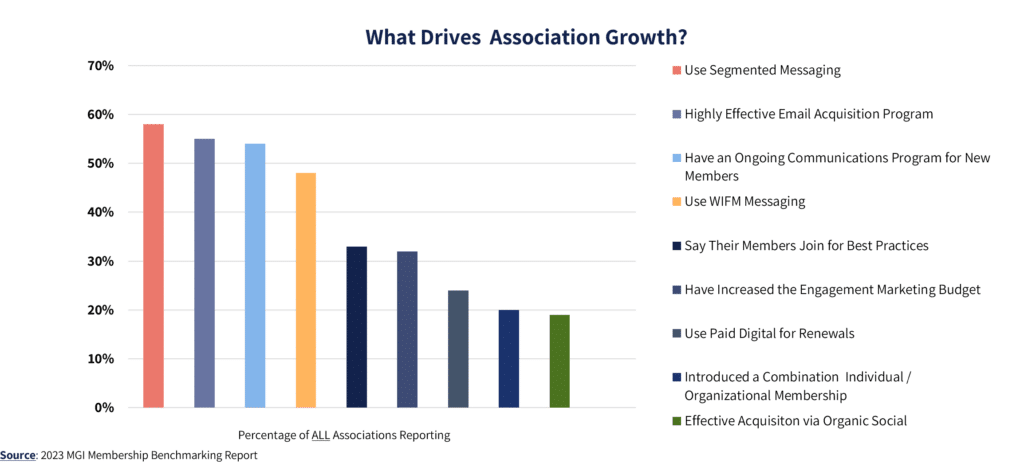
Diversifying Revenue and Membership Strategies
ACROSS-THE-BOARD DUES INCREASES
Forward-thinking associations are redefining their value propositions to ensure their long-term sustainability and relevance.
ALL-INCLUSIVE MEMBERSHIPS
NON-MEMBER ASSOCIATES AND CREDIT-BASED MEMBERSHIPS
PRACTICE MEMBERSHIPS
Revolutionizing Association Management with AI
Artificial Intelligence (AI) has ushered in a new era of association management trends, offering unprecedented opportunities to enhance operational efficiency, member engagement, and personalized communication. In this transformative landscape, AI is not just a technological advancement; it’s a strategic ally that enables associations to navigate the complexities of modern member expectations and competitive pressures. Through AI-powered member segmentation, content personalization, and predictive analytics, associations are leveraging AI to streamline operations, craft tailored member experiences, and drive growth in innovative and impactful ways.
AI FOR MEMBER SERVICE
In this transformative landscape, AI is not just a technological advancement; it's a strategic ally.
AI FOR MEMBER COMMUNICATION
AI FOR MEMBERSHIP MARKETING
SIMULATING MEMBERS: DIGITAL TWINS
For more on AI in associations, please see From Mundane to Magical: How AI is Reshaping Association Management.
Conclusion: A Forward-Looking Approach
As associations navigate through the changes 2024 brings, the key to success lies in embracing innovation, leveraging technology, and remaining adaptable to the evolving needs of their members. By reimagining their value propositions, diversifying revenue streams, and harnessing the power of AI, associations can ensure sustained growth and relevance in an increasingly dynamic environment. The future for association management trends is not just about adapting to change but thriving through innovation and resilience.
Revolutionizing Association Management: Leveraging AI for Deeper Engagement and Smarter Strategies 1 Mar 2024, 3:35 pm
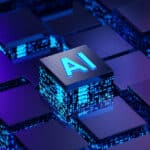
AI In Association Management 2024
As the landscape of AI in association management continues to evolve, the integration of Artificial Intelligence (AI) stands out as a transformative force, propelling us towards enhanced efficiency, deeper member engagement, and more strategic insights. Far from being just another tech trend, AI has become a fundamental element of our strategic toolkit, revolutionizing how we interact with members, streamline operations, and make data-driven decisions.
From automating mundane tasks to personalizing member experiences and predicting future behaviors, AI’s role is multifunctional, heralding a new era of innovation and efficiency.
Streamlining Operations Through Automation
AI technologies, especially in the form of chatbots and advanced knowledge bases, are redefining how associations interact with their members. These AI tools offer instant support, addressing common inquiries and resolving issues around the clock. This immediacy and convenience are crucial in satisfying the modern member’s expectations for quick and accessible support, thereby boosting member satisfaction and loyalty.
AARP’s Sami Hassanyeh discusses using AI for Member Service
An example of this in action is an association that introduced a chatbot to handle frequently asked questions, such as event details and membership renewal processes. The chatbot managed to reduce incoming member service calls by 30%, significantly improving response times and member satisfaction.
Personalizing Member Communications
Personalization is another area where AI is making a significant impact. Through dynamic versioning powered by AI, associations can now deliver customized messages tailored to individual members’ preferences and interests. This method uses data analytics and machine learning algorithms to dissect member behavior and engagement, allowing for highly targeted communication strategies that significantly enhance member engagement.
A health professionals’ association utilized AI to segment its communications, resulting in a 25% increase in engagement with their email campaigns. By sending personalized content based on each member’s interests and interaction history, the association not only boosted engagement but also increased attendance at targeted events and webinars.
In a competitive landscape, this ability to tailor marketing strategies can significantly impact membership growth.
Transforming Membership Marketing with AI
AI-generated content and sophisticated data-driven marketing strategies are transforming how associations attract and retain members. By analyzing vast datasets, AI tools can pinpoint the most effective messaging and channels for different membership segments, optimizing marketing efforts to resonate with the intended audience. In a competitive landscape, this ability to tailor marketing strategies can significantly impact membership growth.
For instance, an association leveraging AI for membership marketing saw a 15% increase in new member acquisition within the first year. By employing continuous A/B testing and analyzing member data, the association identified key messages and channels that appealed to potential members, streamlining their marketing strategy for maximum impact.
Predicting Behaviors with Digital Twins
Digital twins in AI represent a groundbreaking approach where virtual replicas of members are created to simulate behaviors and preferences. This method allows associations to test various engagement strategies and membership models without risking real-world fallout. Insights from these simulations can inform strategic decisions, ensuring offerings are closely aligned with member needs.
An environmental advocacy group used digital twins to test reactions to different membership fee structures and benefit packages. The simulations revealed preferences for tiered membership options, leading to a restructuring that increased membership renewals by 20%.
AARP’s Sami Hassanyeh discusses using Digital Twins to simulate member response
This method allows associations to test various engagement strategies and membership models without risking real-world fallout.
Informing Strategic Decisions
Beyond operational efficiencies and marketing, AI-powered data analytics play a crucial role in strategic decision-making. For example, dues sensitivity analysis helps associations find the sweet spot for pricing, balancing financial sustainability with perceived value. Loyalty driver analysis, on the other hand, uncovers factors that affect member retention, guiding enhancements in value propositions and engagement strategies.
A trade association conducted a loyalty driver analysis using AI, identifying key services that were most valued by their members. By focusing on these areas, the association improved its retention rate by 18% over two years.
Conclusion
For more on AI in association management, please see: 2024 Association Outlook: Embrace the Change.
Member Renewal Best Practices: Insights from Industry Leaders 5 Dec 2023, 5:37 pm

Member Renewal Best Practices
A Bespoke Research Study By Sequence Consulting
We conducted in-depth research with ten highly prominent organizations with renewal-based business models to understand member retention best practices and benchmarks across industries.
Participating organizations included associations, publishers, financial services, and philanthropic organizations.
The research topics include:
- Value Proposition
- First-Year Renewal
- Auto-Renew
- Renewal Stream and Duration
- Renewal Timing
- Grace Periods
The result is a revealing look at what works in renewal across the board, regardless of the business you are in, and practical insights you can use to improve your own member retention.
To learn more about member renewal best practices see The Art of Member Retention: 3 Essential Strategies and Membership Retention and Renewals: Strategies, Processes, and Tips
The Real Reason Members Don’t Renew: They Don’t Know What You Do 20 Mar 2022, 4:47 pm

The Real Reason Members Don't Renew Membership: They Don't Know What You Do
Membership surveys consistently indicate that the primary reason for non-renewal among members is a perceived lack of value. The common factors cited by members who don’t renew membership often include lack of engagement, value, or return on investment (ROI). This raises the question: “What do they want us to do?” But the real question is: “What do they think we do?”
A prominent medical society, facing challenges in delivering member value like many others, posed this question and received a startling response: Members knew almost nothing about most of the work the association did. Shockingly, only 20% of established physicians were aware of any other offerings from the association besides the journal. Consequently, they failed to grasp the value of their membership because they were unaware of the association’s other valuable resources. As a result, they lacked a compelling reason to renew membership.
Members knew almost nothing about most of the work the association did. Shockingly, only 20% were aware of any other offerings besides the journal.
Members don't need new things to make them renew
The main question was this: “How would their perception change if they were aware?” To explore this, they experimented. They engaged in discussions with doctors about the organization and its impactful contributions. These discussions were titled “Twenty Minutes With Tim” (pseudonym). They believed that spending twenty minutes with any physician would be sufficient to persuade them to become members and renew their membership. We explained everything the organization did to improve the lives of doctors and their patients, most of which they had never heard of before. Subsequently, they asked if these physicians would consider joining or renewing. Almost all of them said they would.
The key takeaway is that members weren’t asking for anything new or different. They weren’t expressing any dissatisfaction with the organization’s current efforts. Instead, they weren’t aware of all the organization’s great work that served their interests. The real challenge lay not in coming up with new offerings but in effectively showcasing the exceptional offerings they already had.
You must align with how members perceive value
Not every member gives you twenty minutes. Sometimes, you only have twenty seconds while they quickly scan your email or post. Naturally, you might feel inclined to overwhelm them with a long list of everything you do or desperately try to direct them to your website for more information. But even if you’re already doing these things, chances are you’re still struggling to make an impact. Your current methods aren’t effective because they don’t align with how members perceive value.
Think about those classic diners with extensive menus boasting hundreds of options. Do you read the entire menu? Or do you skip to the dishes you like and ignore the rest? It can be off-putting when you must put in so much effort to find what you want. While your organization is not a diner, you might unintentionally imitate one by bombarding your members with information, hoping they’ll find something they like. So, how can you simplify your offerings when everything you do is genuinely valuable?
members don't renew just for transactions
Twenty Minutes With Tim revealed an important insight: not all members prioritize transactional value, where it’s a give-and-take relationship. Some members are interested in benefits and discounts, while others have different concerns. These individuals focus on improving patient outcomes, challenging insurance companies and pharmaceutical giants, and enhancing their practices. What’s intriguing is that these members aren’t searching for mere deals; they seek an ally.
The organization possesses a wealth of information that aligns with members’ interests. They have achieved remarkable accomplishments and obtained impressive results. When members become aware of these endeavors, they recognize the value and find a compelling reason to renew membership for themselves and their profession and patients. They perceive the organization as an ally worth supporting, thus motivating them to continue their membership.
Associations find themselves wondering, "What do they want us to do?" The real question is, "What do they think we do?"
If you want them to renew membership, tell them what you do for them
In response, the organization rolled out a bold new strategy that made what they learned in Twenty Minutes With Tim into a campaign. It put physicians front and center in the membership brand, and reinforced the things the association did that doctors cared about most. It included “proof points,” real stories of things the association had accomplished for doctors to make the case that membership was for them. In just one year, this innovative membership brand and marketing strategy tripled the rate at which new members joined the association. (To learn more, read The Power Of Strategy: How AMA Achieved Exponential Member Growth.)
Countless organizations face a similar challenge. Frequently, associations find themselves wondering, “What do they think we do?” It becomes clear that their members really have no idea what their association does and that therein lies the root cause of why members don’t engage and don’t renew membership.
What do your members think YOU do? The answer could be the real reason members don’t renew.
For more insights on why members don’t renew, see: From Ordinary to Extraordinary: Crafting Membership Offers They Can’t Refuse and Membership Renewal Strategy: The Top 6 Reasons Your Members Don’t Renew.
2 Ways to Test Your Organization’s Member Focus 26 Mar 2021, 7:16 am

Organizations often claim to have strong member focus, but how can they be sure they truly are? It’s easy to assume alignment with member needs, but testing that alignment is a critical exercise. Here are two practical ways to evaluate whether your organization genuinely prioritizes its members and maintains a strong member focus.
1. The Member Test: Seeing Through Their Eyes
To pass the Member Test, your organization must consistently put itself in its members’ shoes. This means understanding their challenges, aspirations, and how your offerings align with their needs. Consider these steps to ensure a clear member focus:
Engage Directly: Conduct member surveys and interviews to gather feedback about their priorities and satisfaction with your programs and services.
Create Personas: Develop detailed member personas to represent key segments of your audience, ensuring their needs and goals guide your decisions.
Audit Your Offerings: Review your programs, events, and benefits to assess how well they address member priorities. Are they solving real problems or adding tangible value?
For example, a regional medical association realized through member interviews that rural healthcare providers felt isolated and unsupported. In response, the association launched a virtual peer network where members could share resources, discuss challenges, and access specialized training. This initiative strengthened the association’s member focus and bridged a significant gap for rural providers.
Another example comes from a professional society that discovered its members wanted more real-world applications of industry research. The society responded by creating practical toolkits and case studies that applied research findings to day-to-day work, resulting in a measurable increase in member satisfaction.
Aligning with member needs enhances engagement, which in turn strengthens loyalty and drives growth
2. The Mission Test: Aligning Action with Purpose
The Mission Test evaluates whether your organization’s activities align with its mission. A misalignment often signals a drift from member focus, as the mission should encapsulate why your organization exists and whom it serves. Here’s how to apply this test to ensure a mission-driven member focus:
Revisit Your Mission Statement. Ensure it clearly reflects member-centric goals. Is it still relevant to today’s members’ needs?
Evaluate Resource Allocation: Review your budget and staffing to confirm alignment with mission-critical initiatives. Are you investing in areas that deliver the most value to members?
Assess Program Impact: Measure whether your offerings advance the mission in ways that benefit your members. Programs that fall outside this scope might require reconsideration.
For instance, an engineering association with a mission to “advance innovation in sustainable design” noticed that its flagship journal focused primarily on theoretical research. Members, however, wanted more content on practical, implementable solutions. The organization restructured its editorial priorities to include applied case studies and industry best practices, ensuring alignment with its mission and reinforcing member value.
Similarly, a nonprofit association serving educators identified a disconnect between its mission to “equip teachers for success” and its outdated professional development offerings. The association realigned with its mission by shifting resources to develop online, on-demand courses tailored to specific teaching challenges and significantly increased member engagement.
Why These Tests Matter
The Member Test and the Mission Test are essential tools for ensuring your organization remains grounded in member priorities. When you pass these tests, you create a virtuous cycle: aligning with member needs enhances engagement, strengthening loyalty and driving growth. This unwavering member focus can set your organization apart in a competitive landscape.
The Member Test and the Mission Test are essential tools for ensuring your organization remains grounded in member priorities.
Next Steps: Putting the Tests into Action
Here’s how to start:
Survey Your Members: Use tools like surveys or focus groups to gather insights into their current needs. Strong member focus begins with listening.
Audit Your Activities: Review your programs, events, and communications using the Member Test and Mission Test to ensure alignment.
Adjust Strategically: Make data-driven decisions to align offerings with member priorities and your mission, ensuring consistent member focus.
Final Thoughts
Being truly member-focused requires more than good intentions; it demands deliberate effort and consistent evaluation. By implementing the Member Test and Mission Test, your organization can stay aligned with what matters most—your members.
Are you ready to test your member focus? Start small, and the results will speak for themselves. A member-focused organization is stronger and better equipped to fulfill its mission and thrive in the long term.
To read more about member focus, please see How to Make Membership An Offer They Can’t Refuse and “Focus on Members Who Love You Most.”
Page processed in 3.328 seconds.
Powered by SimplePie 1.3.1, Build 20121030175403. Run the SimplePie Compatibility Test. SimplePie is © 2004–2025, Ryan Parman and Geoffrey Sneddon, and licensed under the BSD License.


